Patterns for rhythmic gymnastics. Lana - leotards for rhythmic gymnastics
In my work Now the moment has come that I take most of the swimsuits for tailoring, so to speak, from the luxury category. I will not hide that the more expensive and rich the order, the more interesting and pleasant it is to fulfill it. But there is one caveat. Almost every such client is not at all eager to see a photo of their new thing on my website before the premiere performance of their child in it.
After some thought, I seem to have found a solution that suits both sides at once. In general, I now have an agreement with all my customers: I freely post photographs of their work on the Internet in fragments at absolutely any time, even at the moment of sewing. And the finished models in full size And good quality, be it swimwear for rhythmic gymnastics or dresses for figure skating, my beloved fans will be able to see no earlier than two months after the actual execution of the order.
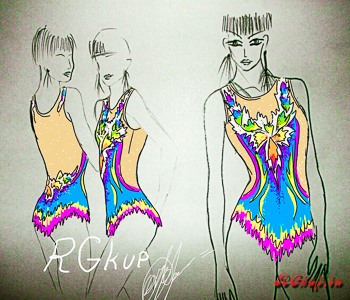 By the way, the accepted rule this is probably the only one effective way to protect the gymnast's premiere performance in a new leotard from the embarrassment of meeting her rival in exactly the same guise. To be honest, I couldn’t even imagine how popular intellectual theft is in our field of activity.
By the way, the accepted rule this is probably the only one effective way to protect the gymnast's premiere performance in a new leotard from the embarrassment of meeting her rival in exactly the same guise. To be honest, I couldn’t even imagine how popular intellectual theft is in our field of activity.
For me personally, copying own works anyone else delivers only positive emotions. It’s so nice to realize that it is your outfits that cause so much admiration and numerous requests to repeat.
Note, Annushkina Yulia without any problems
allows third-party specialists in sewing gymnastics clothing to use their own developments. Required condition is only an indication of the authorship of the original source next to the copy.
But! How I get excited when gymnastic costumes, sewn according to my sketches and designs, 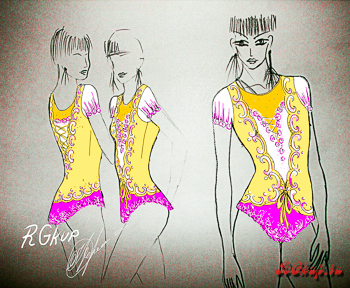 They are trying to pass it off as their original works of art. And when asked directly to post a link to the author, they begin to wriggle, fuss, and sometimes even be rude. Shame on you, dear colleagues! This is my work and I won’t allow anyone to steal it shamelessly!
They are trying to pass it off as their original works of art. And when asked directly to post a link to the author, they begin to wriggle, fuss, and sometimes even be rude. Shame on you, dear colleagues! This is my work and I won’t allow anyone to steal it shamelessly!
Finally, I will share with you another unpleasant phenomenon, recently noticed among those who allegedly contact me potential clients. Taking advantage of the fact that I provide original sketches of leotards for rhythmic gymnastics to customers free of charge even at the negotiation stage, before charging the required advance payment. Cunning people write in a completely brazen manner that they want to sew a jacket from me - they receive the author’s sketch for free, and then disappear forever.
Things won't work like that anymore! I apologize and really hope for your understanding, but now the development of an individual design and sketching of a sketch will be carried out only after the transfer of a minimum deposit in the name of yours truly.
how to sew a leotard for rhythmic gymnastics
HOW TO TAKE MEASUREMENTS:
You need to undress your subject to measure down to his underpants. The less clothes he wears, the greater the likelihood that he will not have to redo and adjust the finished suit. And this is not good. You need to unsolder the rhinestones around the seams, try to match the details of the appliqués when suturing them, the pattern gets lost and all that. Tie an elastic band or cord loosely at your waist. The person being measured must stand straight, do not turn his head after your actions, do not bend, do not bend. Ask her/him to straighten her back slightly, exhale and relax. Girls especially like to suck in their stomachs to appear slimmer. This is of no use. We will make all the allowances and allowances for a good fit of the suit on the figure during the process of creating the pattern, but for now we measure the exact dimensions of the figure in its pure form. Measurements for sports swimsuit I shoot a little differently than for regular clothes.
1. Shoulder width is measured from the back from the low point of one shoulder to the other. The centimeter tape should lie directly on the shoulders.
2. Shoulder length from the low point to the base of the neck without fanaticism. It’s better to have a narrower shoulder and a wider neckline than it will later “suffocate” the athlete.
3. We measure the neck circumference not at the base of the neck, but in its middle, where the stand-up collar will end.
4. We measure the width of the back below the shoulders, 6-8 cm between the hands, without running over the hands.
5. We also measure the width of the front
6. Chest circumference around the figure. Make sure that the measuring tape on the back does not sag.
7. Remove the waist circumference directly from the elastic band tied at the waist.
8. Body circumference along the bottom edge of the panties along the side lines.
9. Vertical circumference of the body. Pass a measuring tape between the legs and connect at the high point of the shoulder at the base of the neck.
10. Arm circumference at the armpit.
11. Wrist circumference.
12. Sleeve length. There is no need to bend your arm, let it hang along your body.
13. Front length from high point shoulder to elastic waist.
14. Back length from the high point of the shoulder to the elastic at the waist. If these two measurements differ little (the figure is straight and not slouched), you can take a measurement from the back waist over the shoulder to the front waist and divide the measurement in half. Measurements 13 and 14 will be the same.
15. Width of panties at the back. Mentally divide the distance from the bottom of the panties on the sides to the very bottom line of the panties and measure so that the judges at competitions do not later reduce the mark for “incorrect costume”. The butt should be closed.
16. At the same level, measure the width of the panties in front.
17. Side seam length to waist. Please raise your hand. I place the measuring tape with the 0 point in the armpit, lower my hand, press the tape and measure to the elastic band at the waist line. The armhole of our future suit should fit tightly around the arm, otherwise when moving the suit will be pulled away from the body, and this is unsightly and inconvenient for an athlete to work with.
18. From the elastic at the waist along the side, measure the height of the panties. For babies I take 7-8 cm. For older ones with a height of 150 cm and above
9-10 cm.
19. The length of the skirt at the back from the elastic at the waist along the protruding part of the buttock to its bottom, where the leg begins.
20. We measure the length of the front skirt along the middle of the figure from the elastic band to the bottom edge of the panties. To avoid mistakes, ask your child to hold some thick book between his legs and measure to its top edge.
21. Measure the circumference of your hips at the most protruding points of your buttocks. This should be the largest volume below the waist.
22. Chest height from the high point of the shoulder to the protruding point of the chest.
23. Center of the chest - the distance between the protruding points of the breasts. For babies, the last two measurements are taken from the nipples. I always mark these points. as controls, so that when marking the pattern on the suit, you don’t “expose” your breasts.
24. Figure girth 4-5 cm (in adults up to 6-7 cm) below the waist. It is customary for gymnasts to sew their skirts below the waist.
25. Sleeve hem. Insert a book or ruler under your arm tightly and measure the distance from the low point of your shoulder to its upper edge.
HOW TO BUILD A PATTERN:
Tracksuits are made from very elastic fabrics (supplex - in common parlance - lycra). Moreover, such fabrics stretch in both directions very well. And stretch mesh too. Therefore, “so that the suit fits,” when creating a pattern, I make allowances from the measurements for width and length. 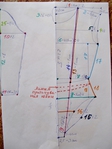
I immediately take two sheets of paper, place them on top of each other and bend them in half lengthwise. The center line of the pattern runs along the fold. Perpendicular to the fold, I set aside the width of the shoulders minus 1 cm divided by 2. From the extreme point to the fold, I set aside the length of the shoulder, marking the high point of the shoulder. From the extreme point downwards I measure 3-5 cm (depending on the size of the suit) and bevel the shoulder line. From the high point of the shoulder to the 3-5 cm mark I draw a segment Shoulder length minus 0.5 cm. From the beginning of the construction along the fold I measure the vertical girth of the body minus 5 cm divided by 2. From the bottom point perpendicular to the fold I put 2.5-2.75 cm for babies, 3 cm for adults.
I make the neckline: on the back for little ones 1.5 cm, for adults 2-2.5 cm, in the front 5 cm and for adults no more than 7 cm. I draw the neck lines by eye, smoothly rounding them. From the high point of the shoulder down, I measure 14 - 1 cm and through this point I draw a perpendicular to the fold. I measure on it (measurement 7 - 5 cm): 4. If measurements 13 and 14 are different, then we build a waist line for the front. From the high point of the shoulder down, measure 13 minus 1 cm and draw the front waist line. as in the photo. From the point of the waist up, measure measurement 17, draw a perpendicular through it to the fold length (measurement 6-4 (5) cm): 4. And from the waist to the resulting point, draw a segment measuring 17 in length. The result is the armpit point. Approximately halfway between this point and the low point of the shoulder, draw a perpendicular to the fold. Place half the width of the back and half the width of the front on it. Roundly connect the armhole lines of the back and front. Down from the waist line, take measurement 18. Draw a perpendicular length from it (measurement 8-5 cm): 4. Connect the waist and bottom of the panties along the side line, measure 18. Measure the width of the panties divided by two in front and back, as shown in the photo. Connect the leg girth lines smoothly. Mark the sewing line for the skirt on the pattern below the waist. We cut out the pattern along the lines of the back. We put one piece aside, and on the second we cut out the neckline, armhole and panties along the lines of the front pattern. On the front part we mark the protruding points of the chest using measurements 22 and 23.
I build the sleeve for girls symmetrically along the middle line. I fold the paper in half and set the sleeve length +1cm along the fold. I put it at the bottom perpendicular to the fold (measurement 11 - 1.5 cm): 2. From the top point along the fold I measure a measurement of 25 minus 1-1.5 cm and through it I draw a perpendicular with the length of half of the measurement 10. I connect the points of the wrist and the armpit and slightly (no more than 1 cm) deepen the seam line inward in the lower third part of the sleeve. I draw a line for the cuff of the sleeve. In the upper part we bend it outward, towards the armpit, inside the pattern. If you don't trust your eye, connect the dots with a straight line and divide it into 4 segments. From the top division point, draw a perpendicular 1.5 cm up, from the bottom - down 1.5 cm. And draw a line through the 1.5 cm points and the middle point of division into segments.
Skirt. The classic skirt on the swimsuit hugs your figure. We build it as a straight line, and then, closing the darts, we make it wider towards the bottom. The width of the pattern is the circumference of the hips (MEASURE 21) divided in half plus 0.5 cm. From the waist down, measure half the length of the back to the waist and draw a line across the skirt. Using this line, we will build grooves. When everything is built, measure 4-5 cm from the waist down (or the distance that you chose) and mark the stitching line for the skirt, cut off the top of the skirt along this line. We cut the pattern along the side line, cut off the side undercut. We cut out recesses on the back part and on the front part. We cut the skirt parts from the corners of the darts along to the bottom line and connect the darts on the parts end to end.
1.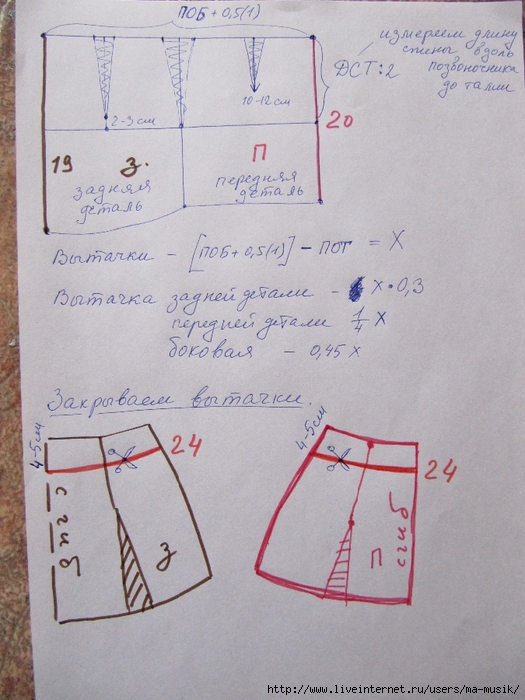
This pattern can be modified to suit any style. Nowadays it is fashionable to make two-layer skirts and flared skirts are often used, especially for babies. I will make the “sun” in two layers. The bottom layer is according to measurements 19 and 20, and the top one is 3 cm shorter. We take measurement 24, divide it by 3.14 and get the diameter; to construct the stitching line for the skirt, we complete the bottom line using measurements 19 and 20.
Even now, instead of a skirt, they sew on details like a mold, cut in a spiral, or with petals, or triangles.
Stand-up collar (if planned) length - measurement 3 +1.5 cm, width at your discretion (I usually make it 3 cm when finished)
Now you need to clearly draw the style of the swimsuit, combine all the shaped lines of the front and back parts and transfer the shaped lines to the pattern, indicate the color and fabric of each part. Also, think about the order in which the fabric parts will be connected and on which sides of these parts, when cutting, seam allowances should be made. To ensure that the suit does not lose its shape and elasticity, the parts are overlapped with a seam that allows the fabric to stretch unhindered. We mark the lines on the pattern that will have an allowance with a tick.
3.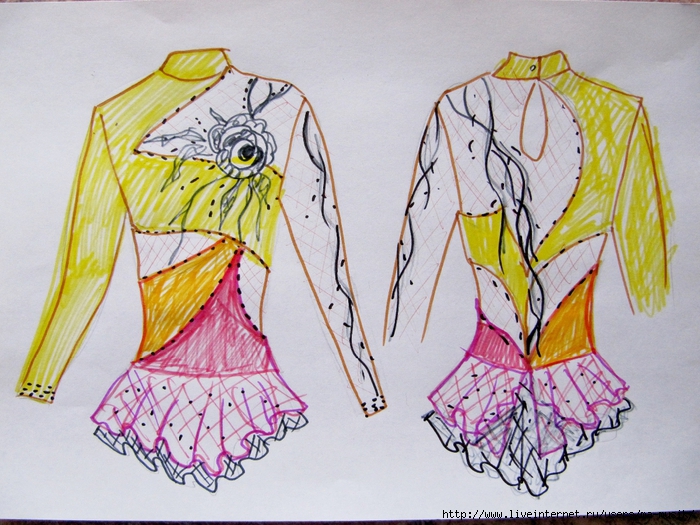
4.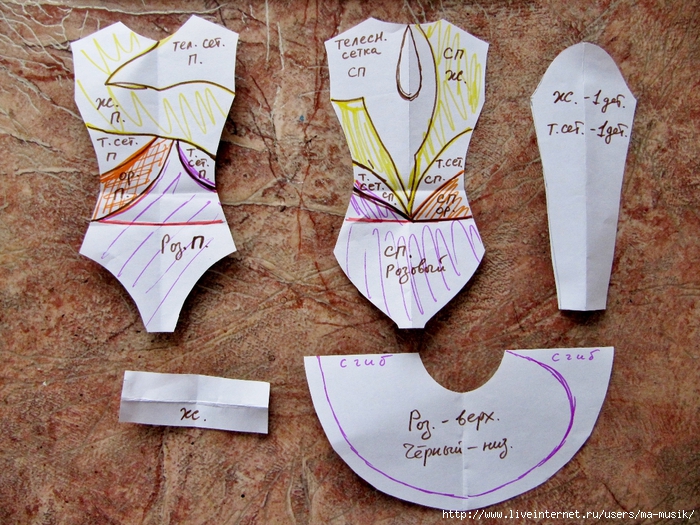
We cut the patterns into pieces along the shaped lines. If the model is supposed to have a lot of small details or narrow stripes, then first cut a solid base from flesh mesh for the front or back, and then cut the pattern into parts for cutting the fabric.
4.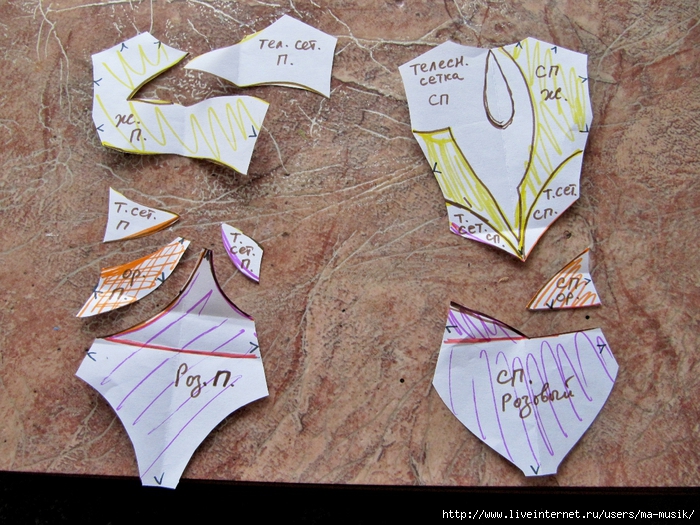
We choose the fabric and mesh for sewing (actually this is done at the very beginning).
1.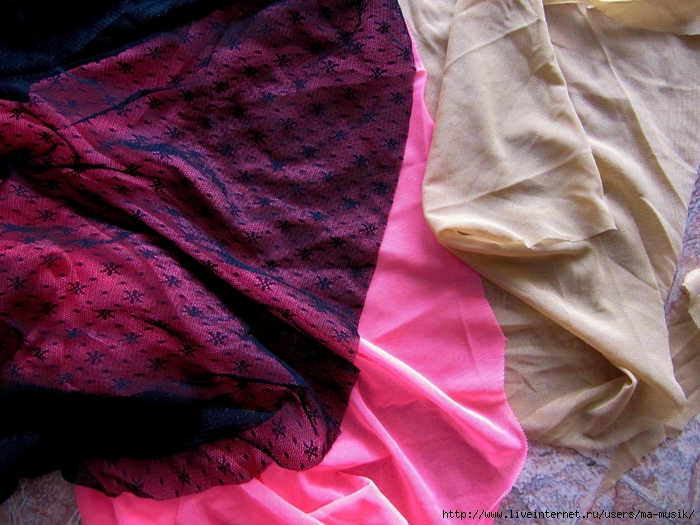
2.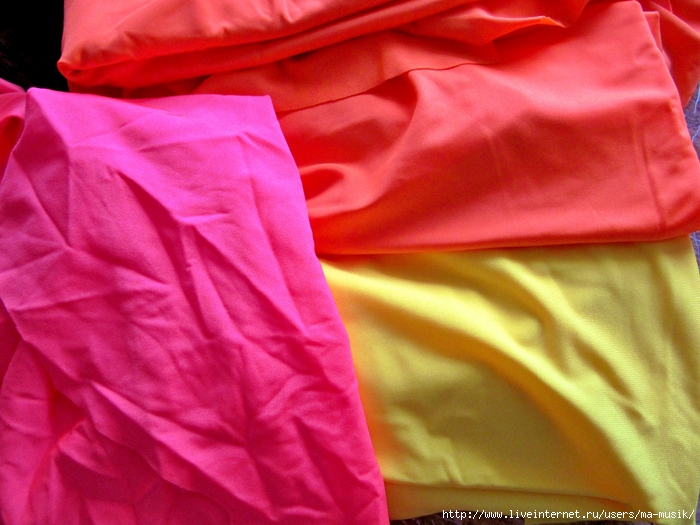
3.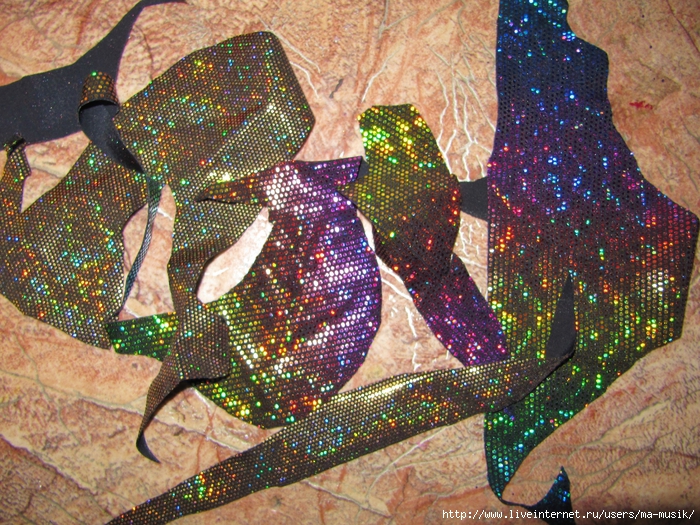
I would like to offer you addresses where you can buy materials for swimsuits. Here is an excellent Italian matte supplex and flesh-colored Italian mesh excellent quality http://blesk-straz.ru/ More shops in Moscow and part-time online stores http://www.estadance.su/tradinghouse/fabrics and also http://www.estadance.ru/dostavka-v-regiony .html I have been buying fabrics and mesh for suits in these stores for many years.
I trace the details of the pattern onto the fabric with a gel pen in a color close to the fabric. I check and mark the seam allowances and cut out the cut details.
17.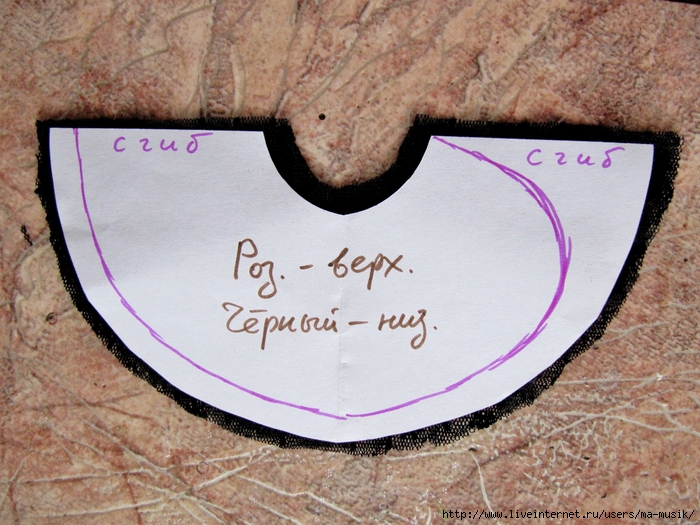
18.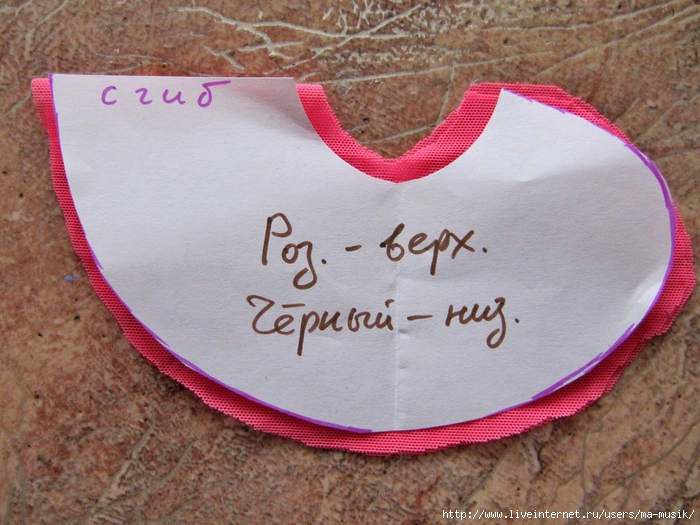
19.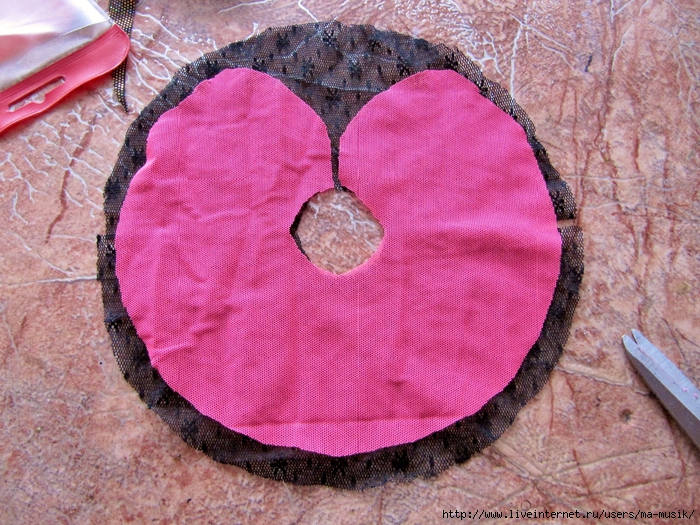
20.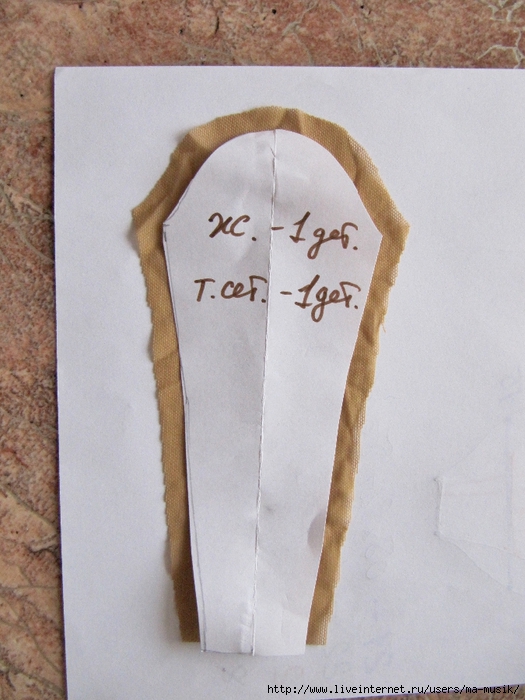
21.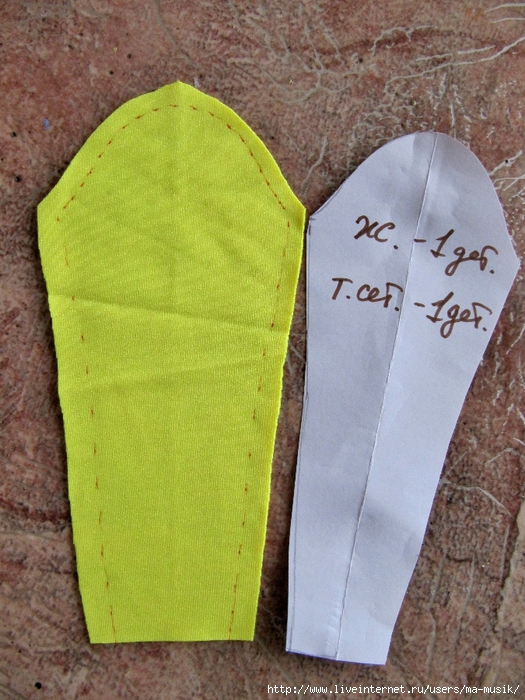
22.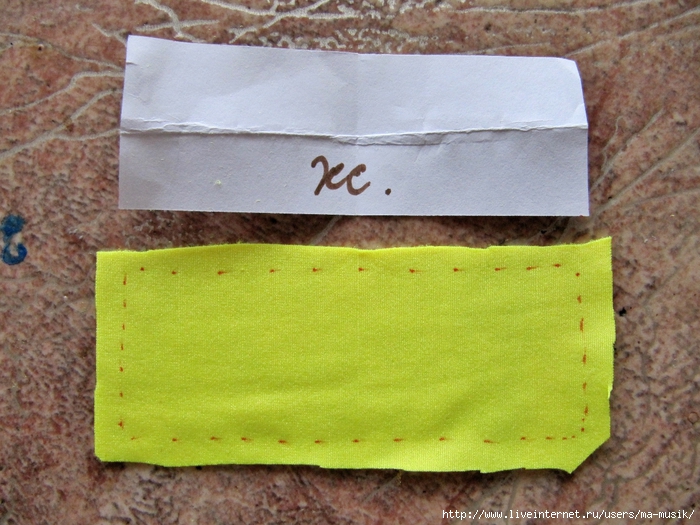
23.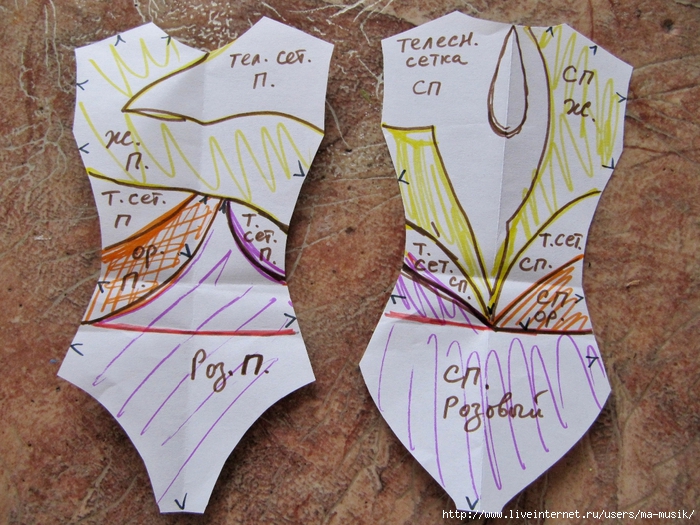
24.
25.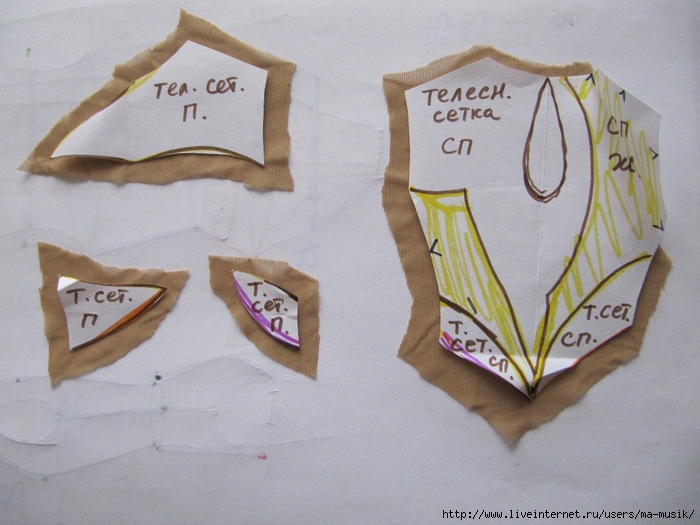
26.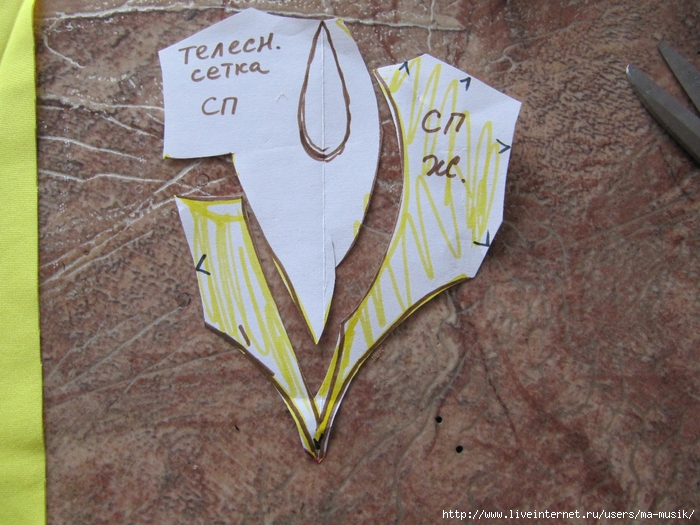
27.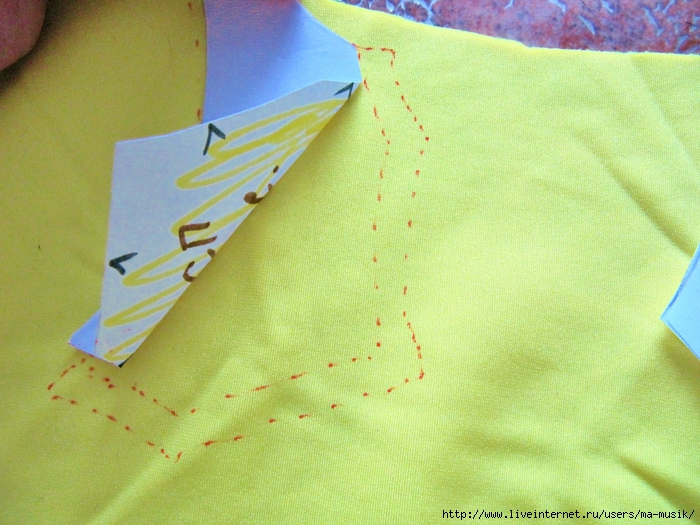
28.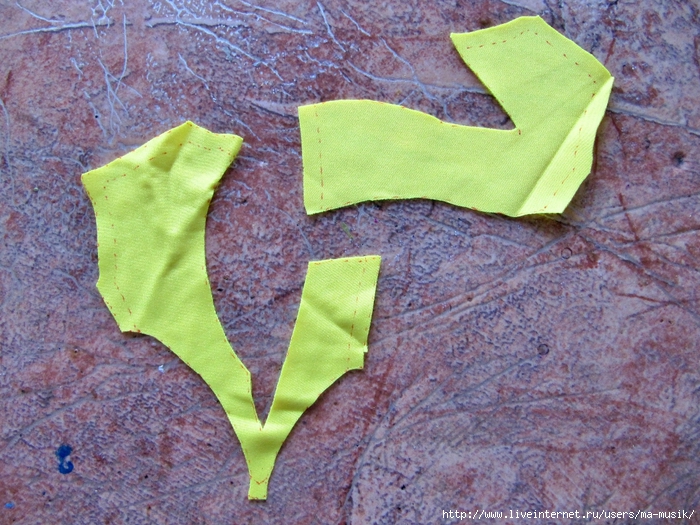
29.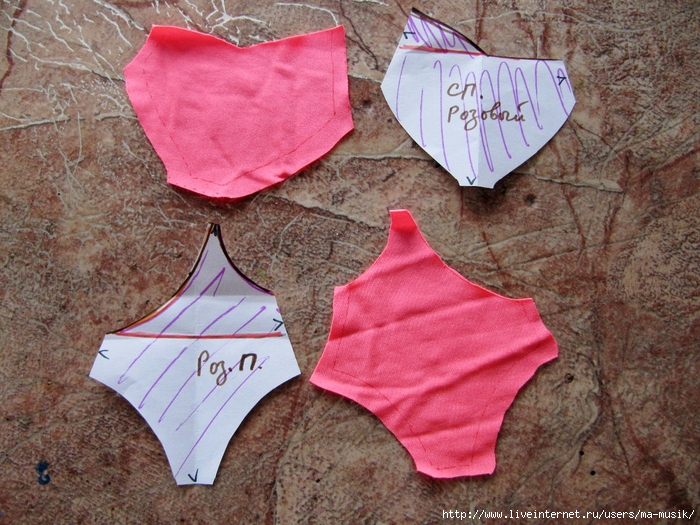
30.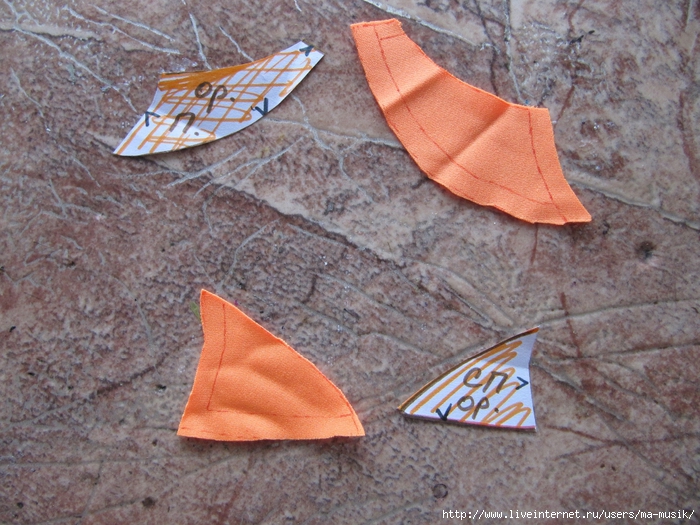
We also cut a strip of flesh-colored mesh 2 cm wide to process the teardrop cutout on the back.
18.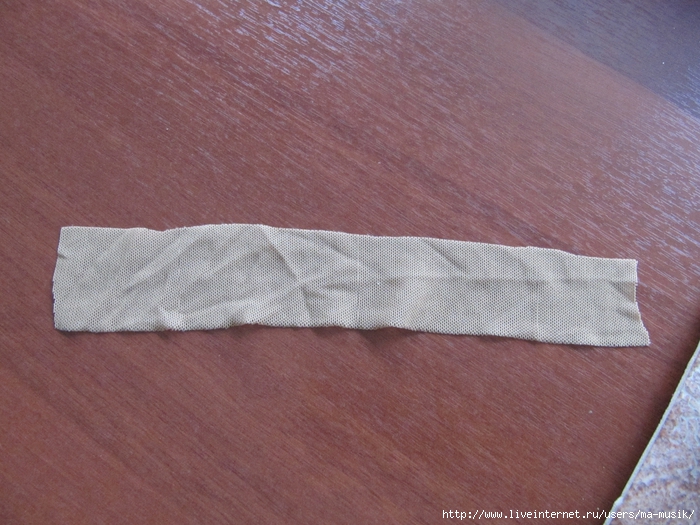
If you do not want to make a stand-up collar, then to process the neckline we cut the same strip of mesh 3 cm wide.
Assemble the front and back parts of the swimsuit. We cut off the parts with needles with a ring at the end so that we can immediately sew on the machine without interference. Be sure to check the size and symmetry of the assembled parts; to do this, fold the parts in half lengthwise. On the back we cut out a droplet 12 - 15 cm long.
1.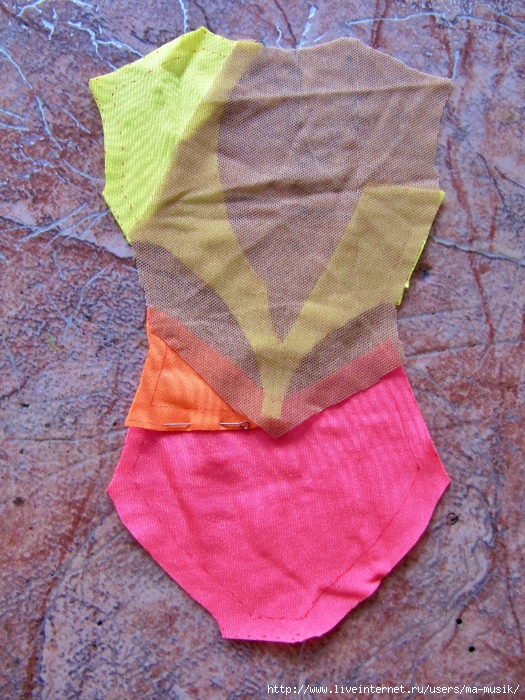
2.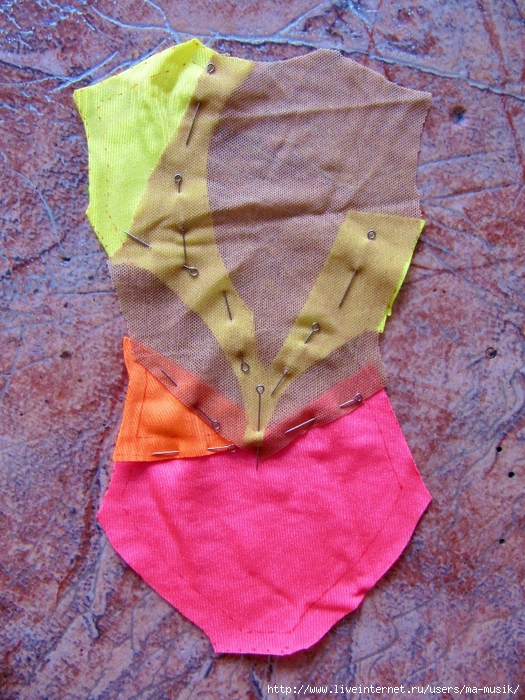
3.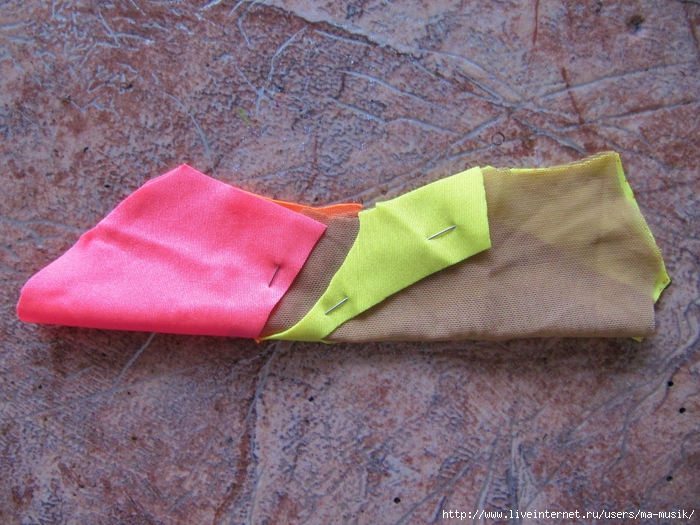
4.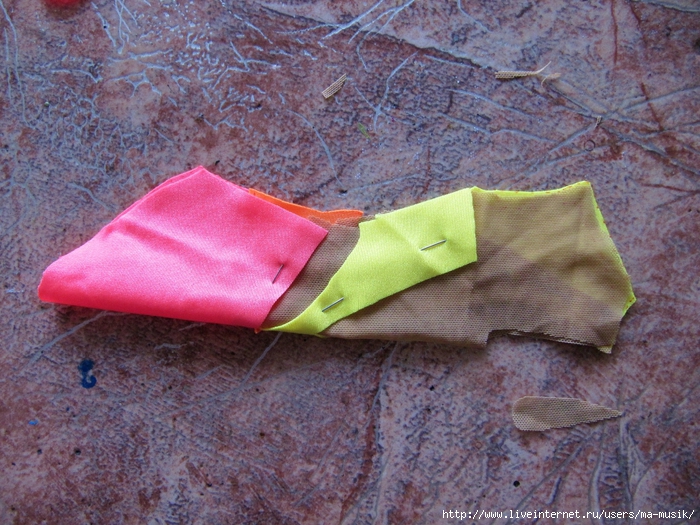
5.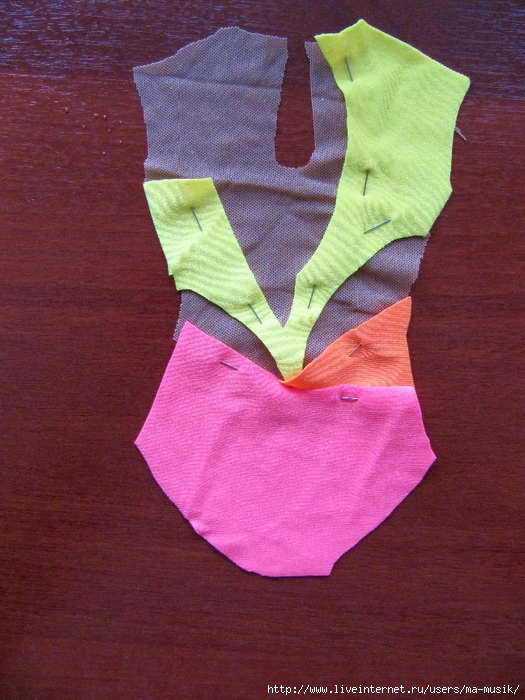
6.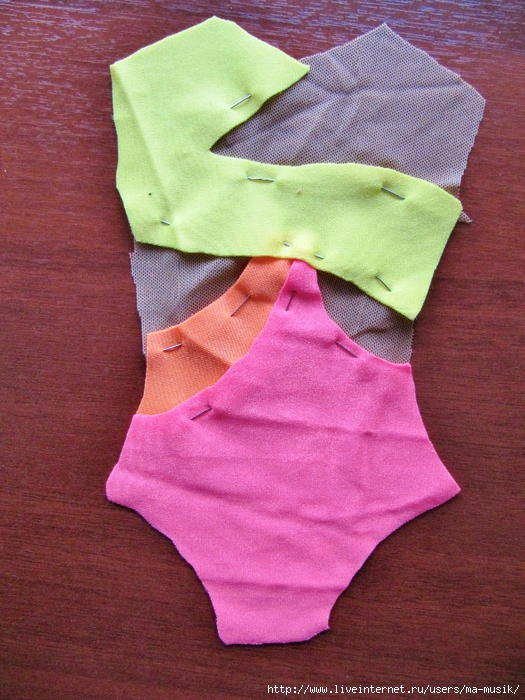
When both halves of the suit are pinned together, combine the side lines and check the length of the parts different colors to match the length so that when stitching everything matches exactly. We select threads according to the colors of the parts. I sew such suits only with lavsan threads, they are very durable (and this is important for a tracksuit): 45l or 55l.
10.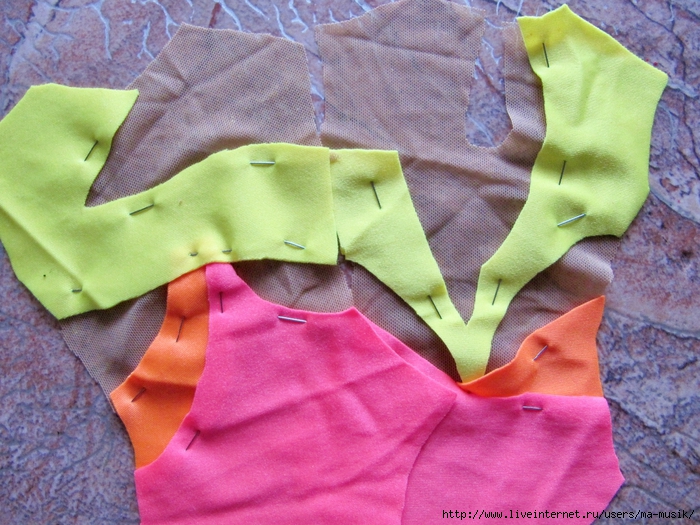
11.![]()
12.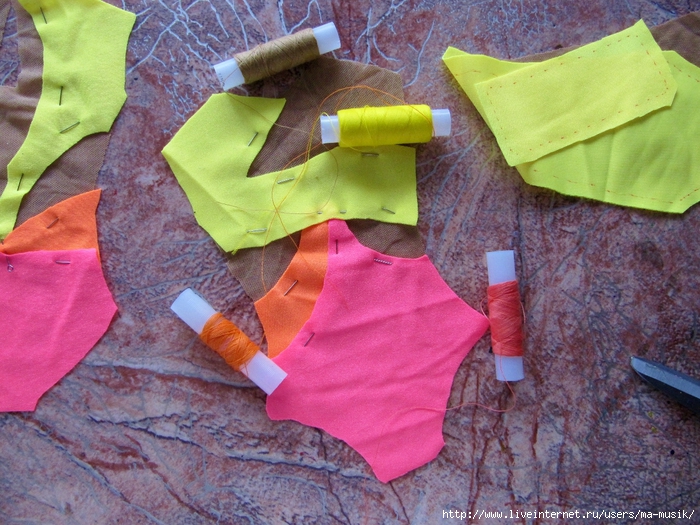
13.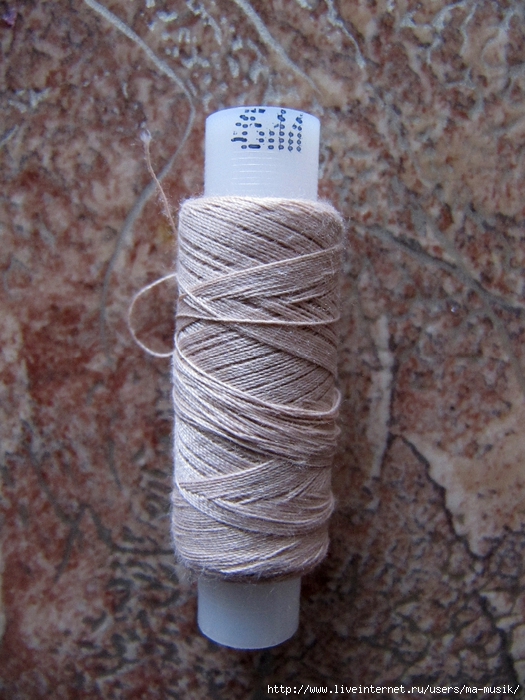
We sew the details of the costume one by one, each time changing the top threads to the desired color. You can take a flesh thread for all details, especially since we now use colors close to flesh color for sewing. color scheme. On the machine we put a zigzag seam with a width of 3.5 - 4 mm, a stitch length of 1.5 - 2 mm. In fact, it’s better to choose the length and width of the seam yourself using scraps, since all machines have their own settings. I use only machine needles special for stretch fabrics. The packaging says TWIN STRETCH, STRETCH or SUPER STRETCH.
12.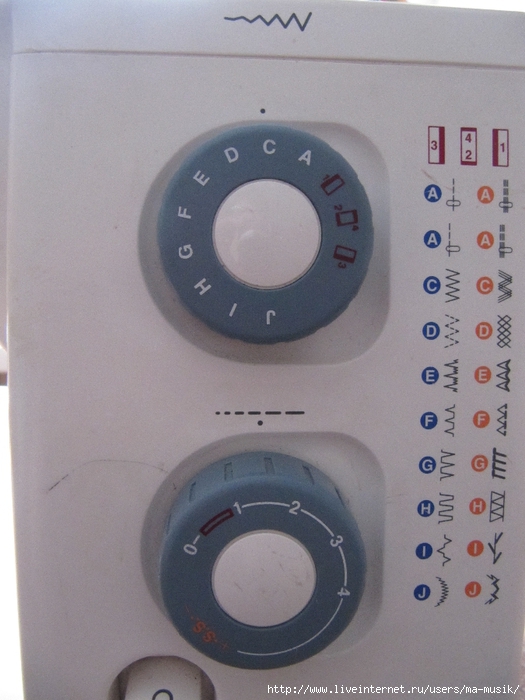
13.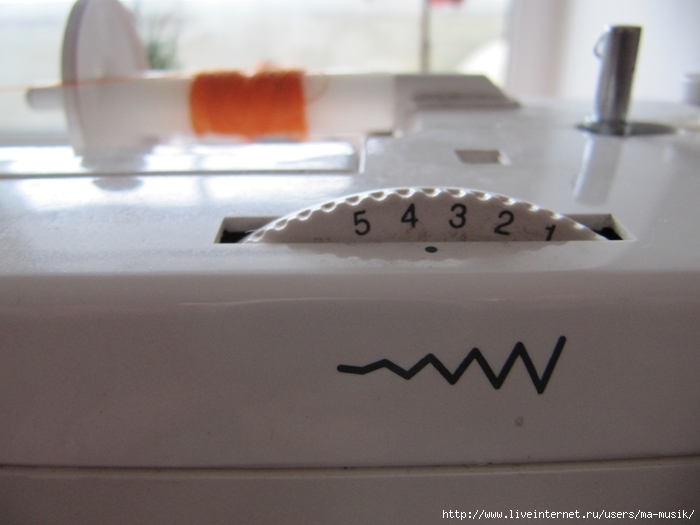
The parts are assembled in layers one on top of the other. First we sew the first part. Immediately cut off the seam allowances close to the stitching.
14.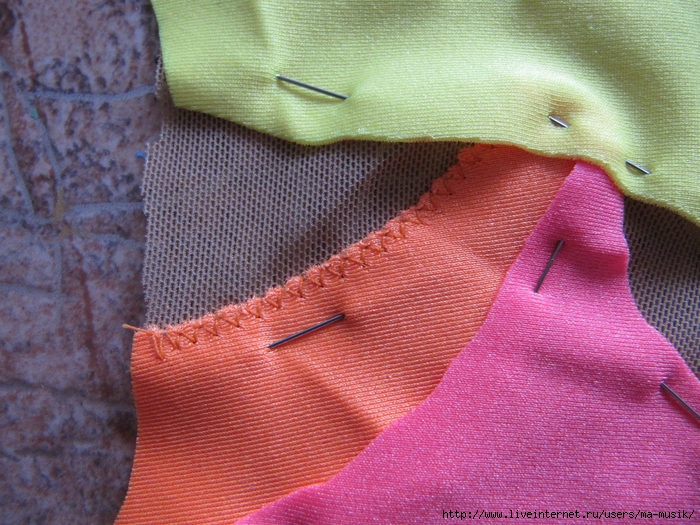
15.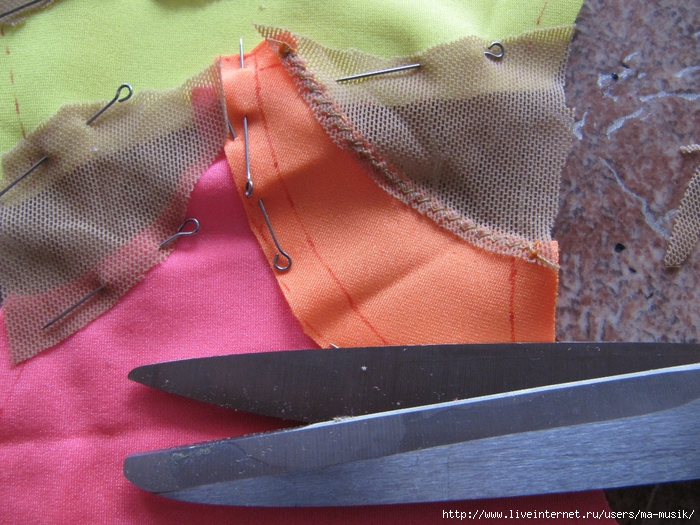
Then we adjust the second part, cut off the allowance, then the next one, and so on.
19.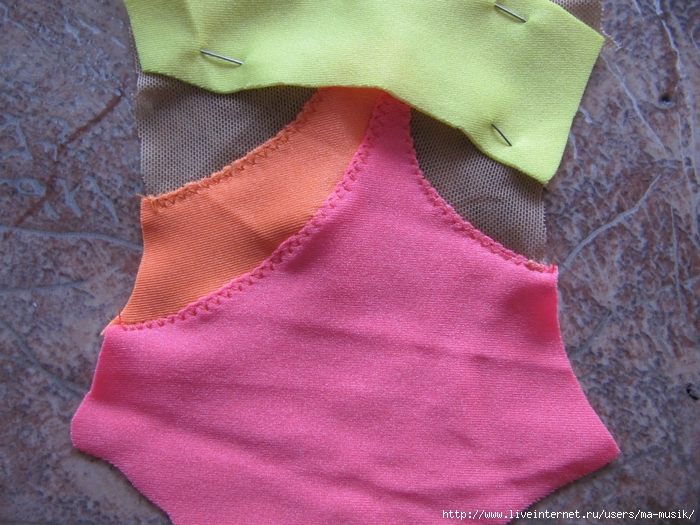
20.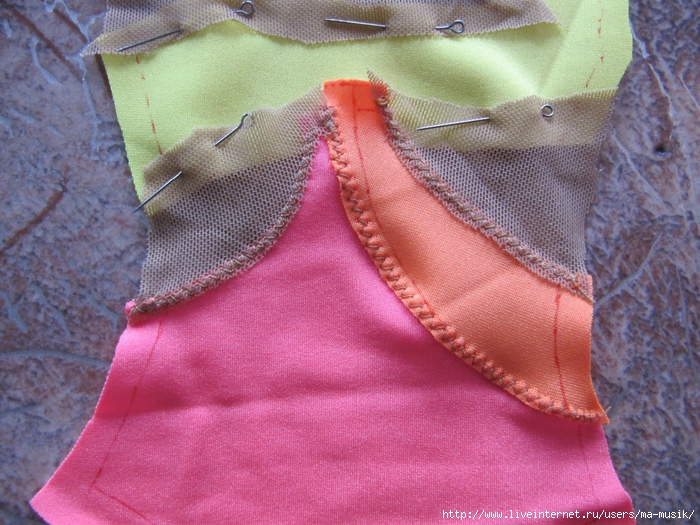
21.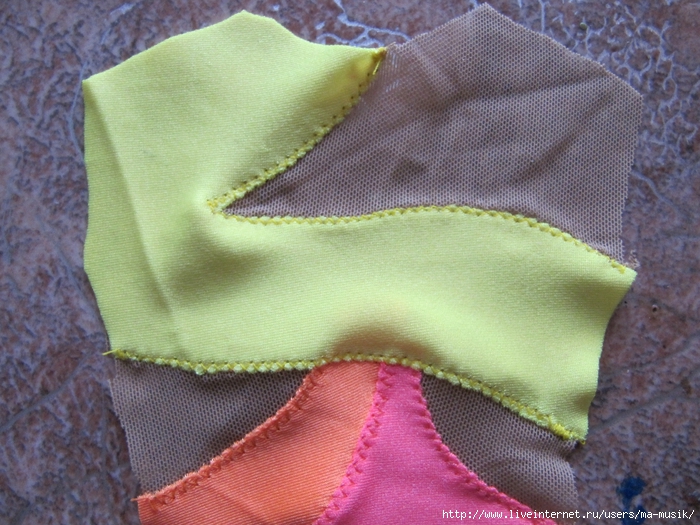
22.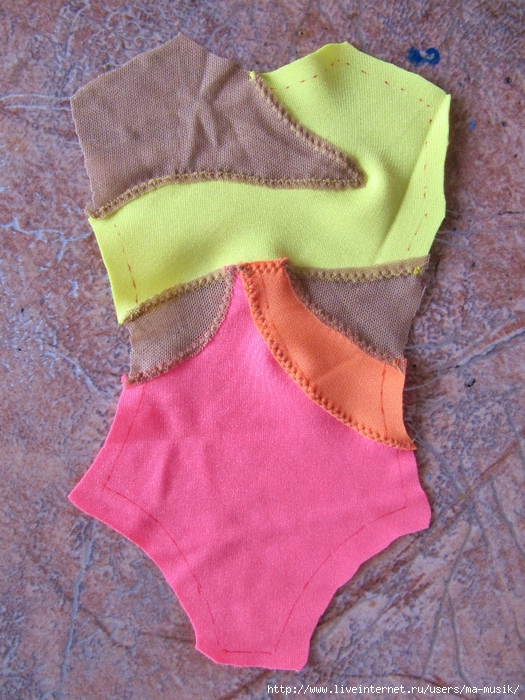
23.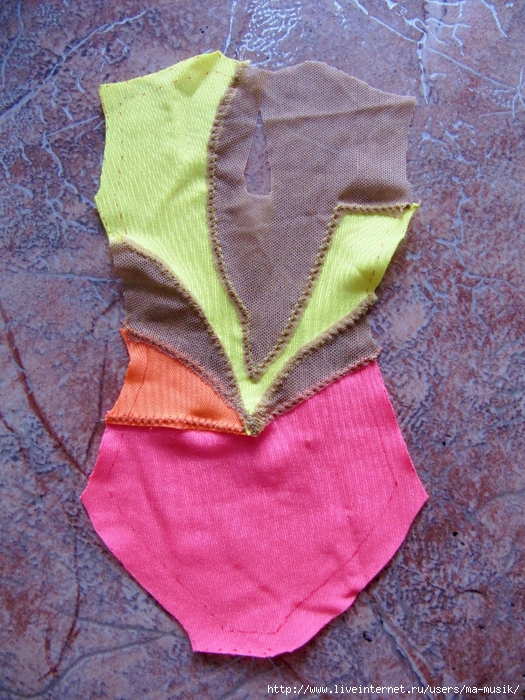
To make it more convenient to continue sewing, you can iron the parts. Biflex withstands enough high temperature heating I iron with steam on almost three points. BUT! Be sure to give the iron time to normalize the heating temperature for 5 - 10 minutes after plugging it in. And try it on a piece of cloth to be sure. When the parts are assembled, I mark the sewing line for the skirt on the front side.
20.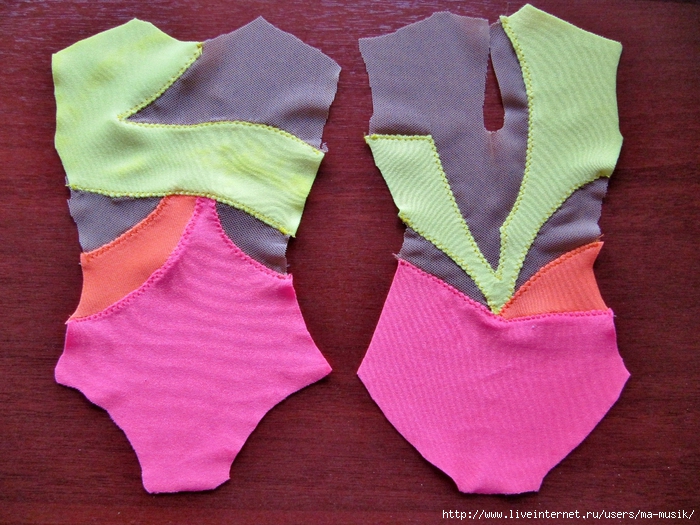
Decorations. You can decorate your suit with appliqués made of fabric in contrasting colors, or shiny fabric with a holographic effect. I use shiny fabrics only based on supplex. The main thing is to check that the fabric does not crawl at the cut, like torn tights.
Applications are made flat, and now voluminous. And we will do just that. In addition, you can paint on fabric with fabric paints. I am quite satisfied with the DECOLA contours made in Russia (our St. Petersburg ones), they are inexpensive and adhere perfectly to the supplex. In addition, there are French JAVANA, MARABU and VIVA paints (they have simple contours, contours and paints with glitter and contours for creating pearls) made in Germany, but they are much more expensive. We use them too. They also make draped parts from mesh and guipure - stretch, etc.
We cut out flowers and leaves from supplex with a hologram. We pin one part of the flower onto the shoulder and sew it with a zigzag, and stretch the second and melt the edges on the candle so that they become wavy. We sew the second flower along the centers of the petals with straight lines. For applique threads I take the color of the supplex base, here the base is black.
27.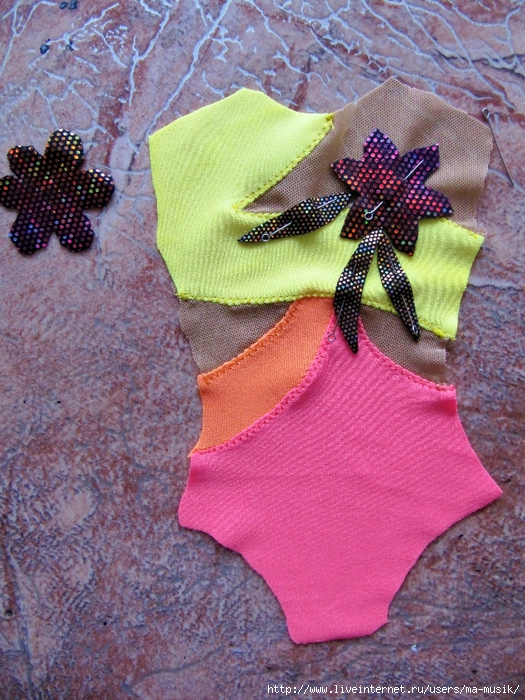
28.![]()
29.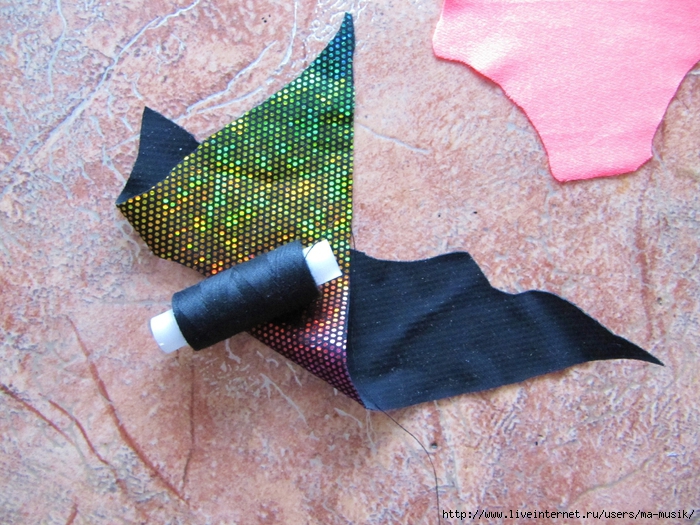
30.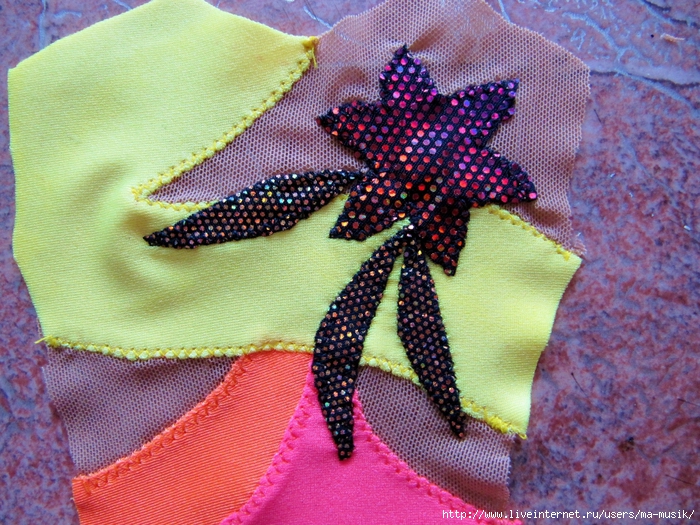
31.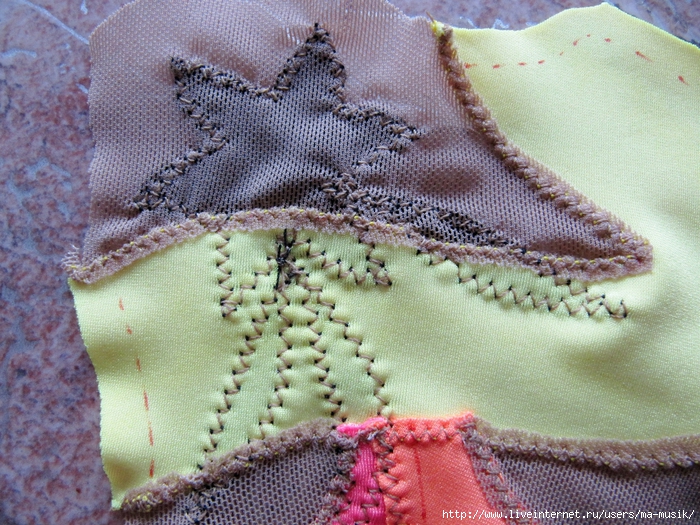
32.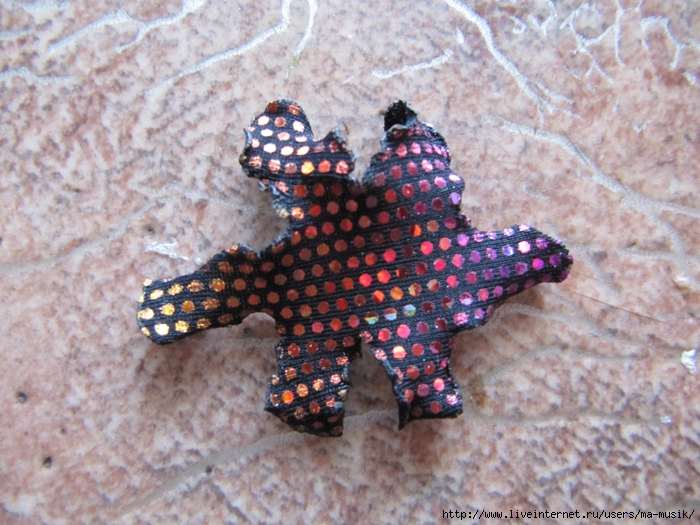
33.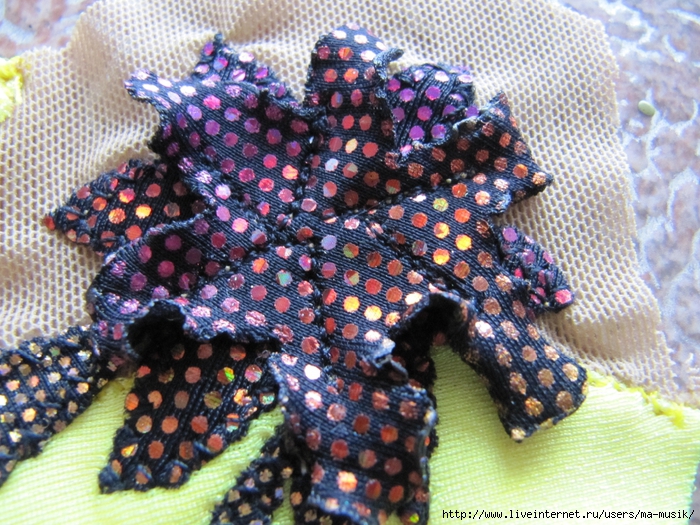
28.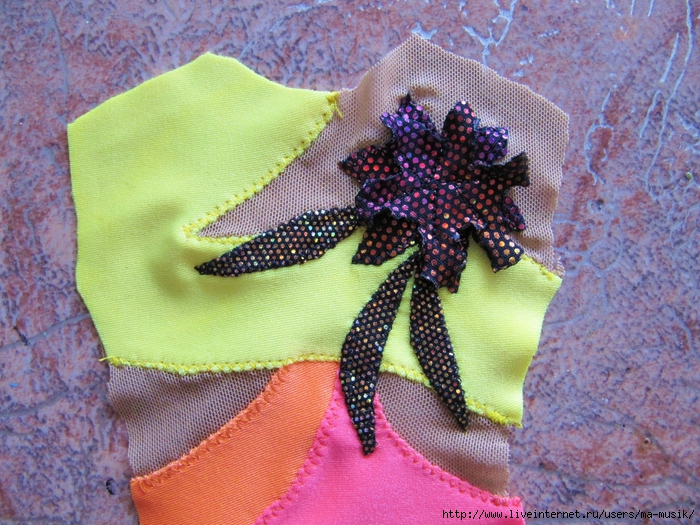
Suppleflex with holographic printing is strictly forbidden to be ironed!!! Therefore, after grinding the parts with appliqués, we do not iron them, no matter what the result is.
For now, I’m processing the details separately on the droplet on the back. The method of processing using the “rulik” technique is to sew a strip of mesh on the wrong side. then we fold the free cut, bend it to the front side and stitch it from the front side along the edge. I use the seam under the letter D - triple zigzag stitch length 2 mm.
30.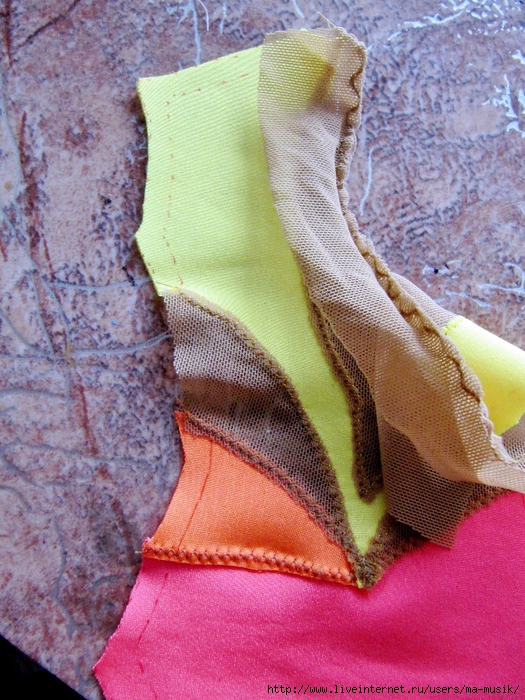
31.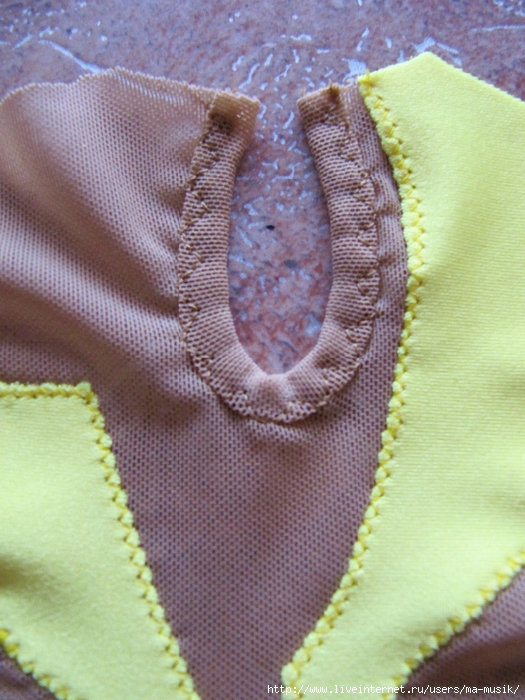
Finishing the decor. My pattern goes from the flower along the body mesh to the shoulder and then along the back. That's why I sew this shoulder. When connecting meshes I use only a 5mm wide zigzag, the stitch length is about 2mm.
32.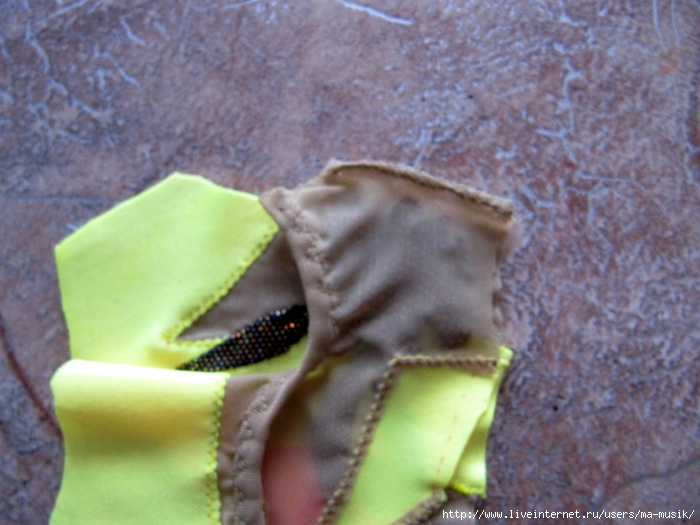
33.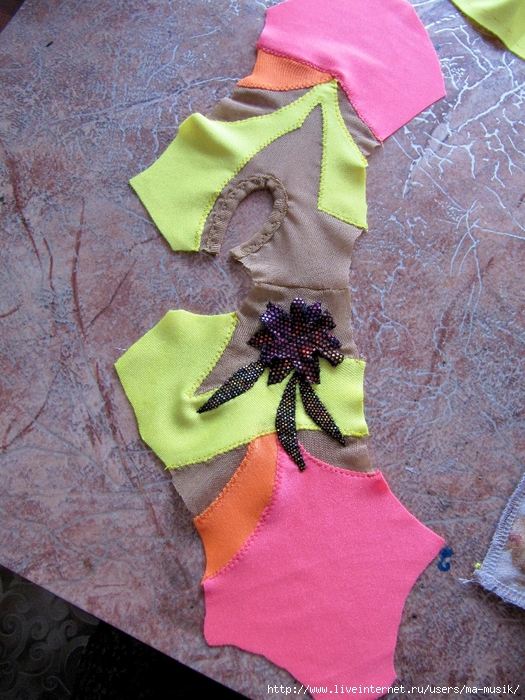
We lay down newspaper and pin it to the base. I usually draw on an ironing board, and I also have a piece of linoleum on my work table, so I simply secure it with needles and rings. I also pin the part for coloring on top so that it does not move out of place. I'm making a drawing. I try not to make the lines too thick. If there is too much paint, blot it with napkins or toilet paper. Then we arrange droplets - pearls and break off the fabric part. While we are painting, the paint begins to dry out, so we try to remove the part from the paper faster, otherwise it will take a long time to peel the paper off the already dried parts. That’s why we attach the newspaper to the table, otherwise it will rise along with the fabric and can stain the suit. I hang the patterned pieces suspended on a rope with clothespins to dry. If details big size, you may need help. If you do get a part of the costume dirty (this happens), feel free to wash the entire part with soap, dry it and start drawing again. At the same time we draw on the sleeve.
37.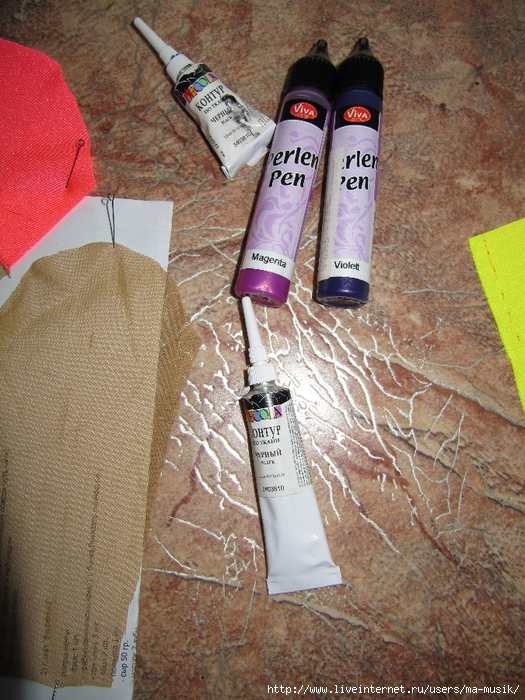
38.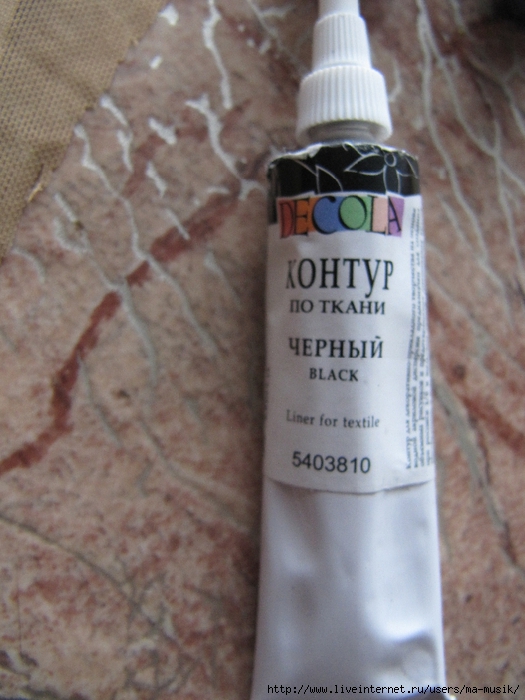
39.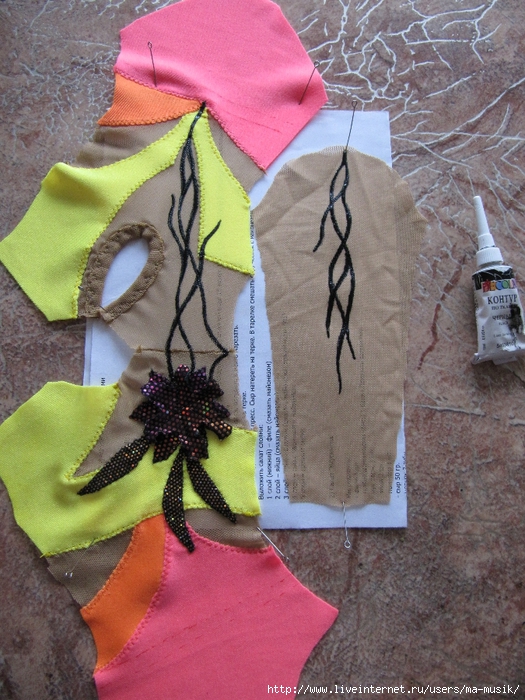
40.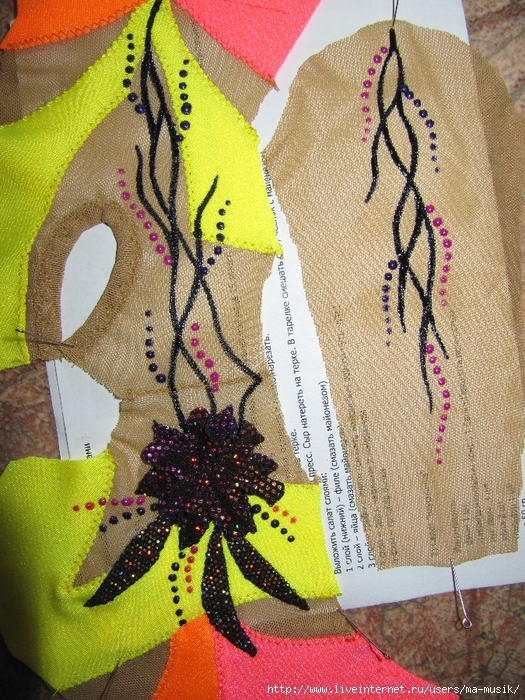
41.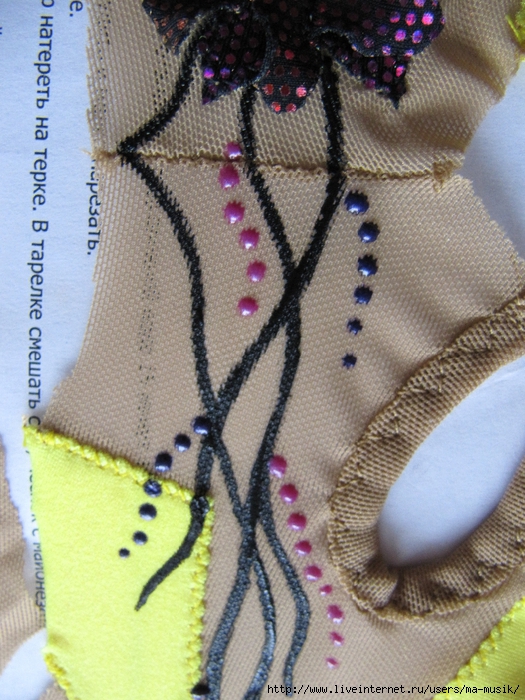
While the paint dries, we will paint the bottom of the skirts. Each with its own color in a tight zigzag pattern. When making a seam, we try to stretch the mesh to create a shuttlecock along the edge. If the skirts are cut from two parts, I sew the side seams first.
41.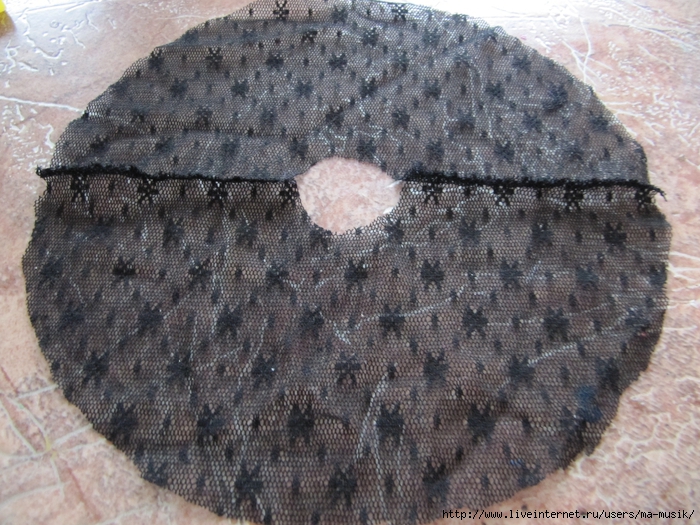
42.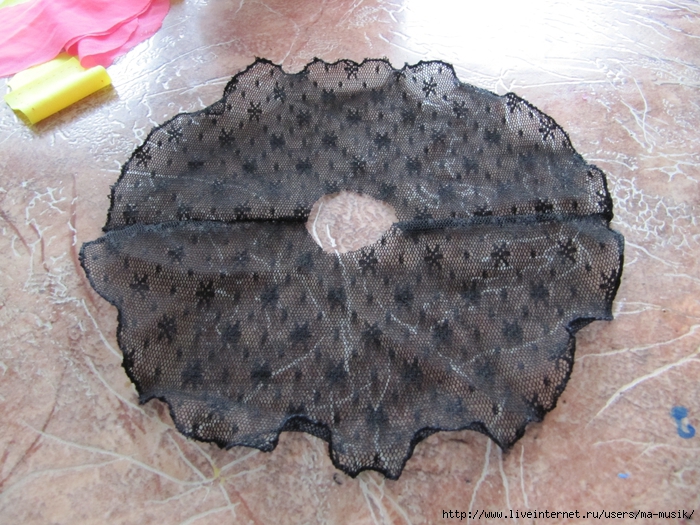
43.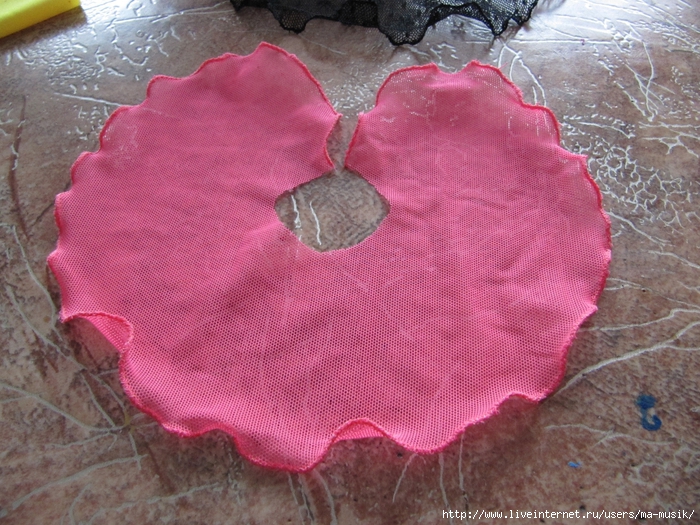
44.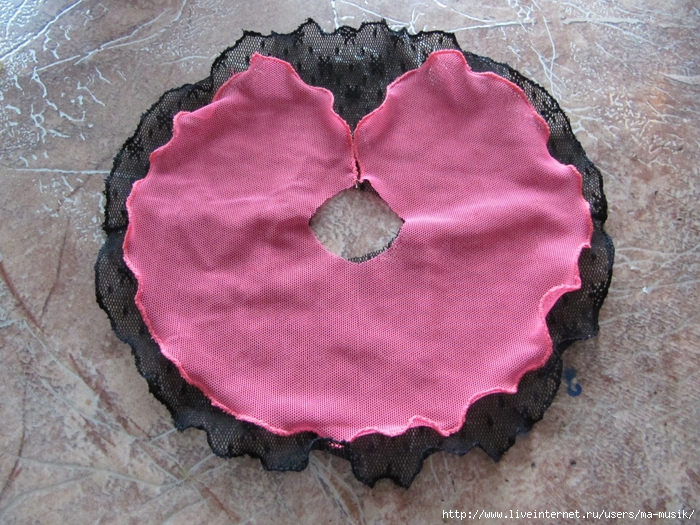
Well, we’ve come to decorating the costume with rhinestones. There's a lot to talk about here. There are rhinestones different quality and manufacturers. They are made in China, Korea, the Czech Republic, and Austria from plastic and glass of different colors. And some are coated with a special compound, causing them to glow with the colors of the rainbow. The highest quality and (alas) expensive Swarovski rhinestones made in Austria. But they are worth it, the quality is excellent. They are made from optical crystal and even cubic zirconia. There are 14 edges on them of different sizes. which gives a very bright shine. Why am I persuading you? Let me just say that I only use Swarovski. There are some that are placed on a special glue, and there are rhinestones with a ready-made glue backing, which are glued with a special applicator; it heats the rhinestones to 170 degrees, the glue melts and the rhinestone sticks to the fabric. All these years I have been confused by the question, why do most craftsmen use rhinestones that need to be glued? They often bring swimsuits made by someone else and ask them to fix them, on which the rhinestones have come off. Washing such suits is a big risk, the rhinestones fall off. After the competition, children crawl on the carpet and collect a “harvest” of fallen rhinestones. The rhinestones themselves become dirty with glue during the gluing process and lose their bright shine. I don't understand!!! But you probably already understood that I use only hot-fix rhinestones (HOTFIX) article 2038 (it used to be 2028). They are a little more expensive, but reliable and bright. A suit with them can be easily washed without damage. I often ask my girls to show me their old swimsuit to check its condition. If the suit was washed in warm water up to 40 degrees, carefully, not rubbed too much and not soaked overnight (as we like to do), then in 3-5 years no more than 10-20 pieces fall off the suit - this is despite the fact that the suit is from 1500 to 4000 pieces. Well, draw your own conclusions. I long ago found an online store that deals only with Swarovski products and delivers them directly from Austria. Their prices are the lowest for these rhinestones and I really like the service, you can pay with a card via the Internet and delivery is not delayed. And there are discounts. And you can order any quantity. And they have glue and applicators and large sew-on rhinestones too. I recommend. http://www.sw-strazy.ru/ For work, I usually order whole packages - 1440 pieces in each gross, but you can also have 20, 50, 100, etc. Yes, please note that when ordering, you need to print not the number of packages, but the number of pieces. Because the first time I got confused, it’s good that they always call back and clarify the order.
I bought myself a color card, it’s very convenient, you select colors and sizes, and then order. By the way, they can bring you something to order; they have deliveries often. I mainly use size SS16 - the most convenient, sometimes in order to lay out the second row I use a smaller size - SS12, or a larger size - SS20. I tried 48 and they are big, but I realized that if you want to put large ones, then it’s better to take sewn-on 10 mm ones. And now I don’t take hot fix anymore than SS30.
1.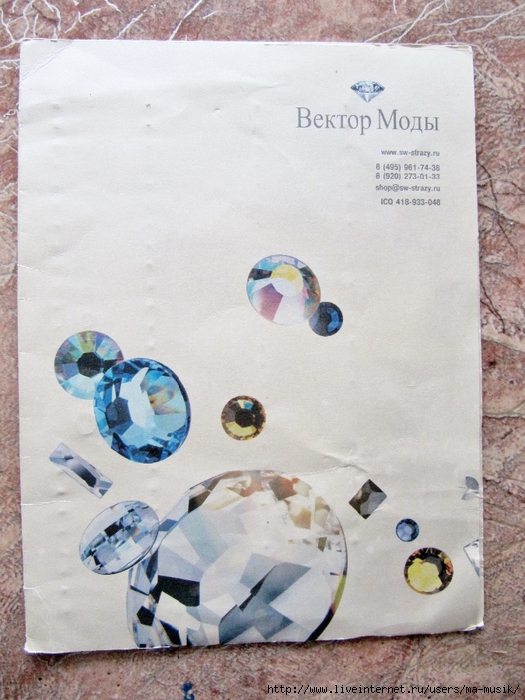
2.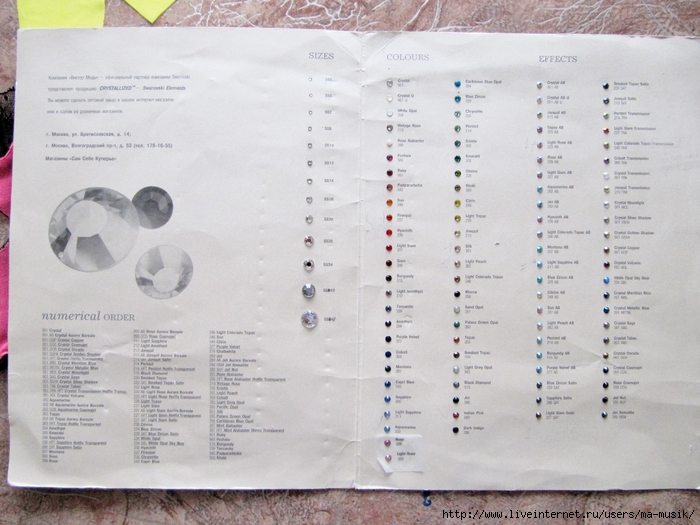
3.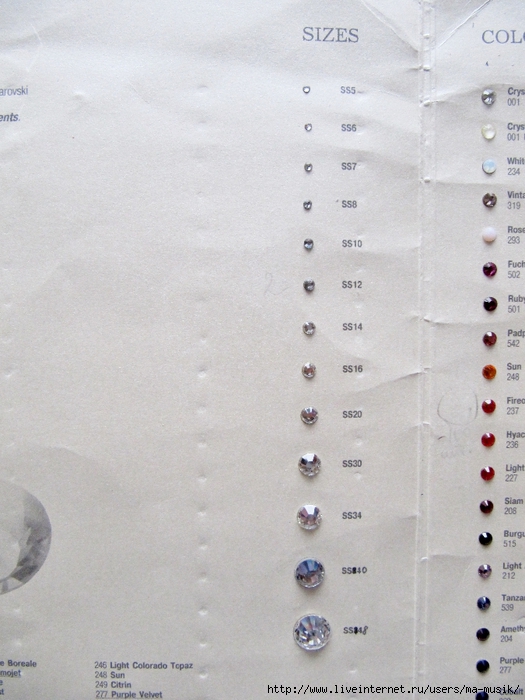
4.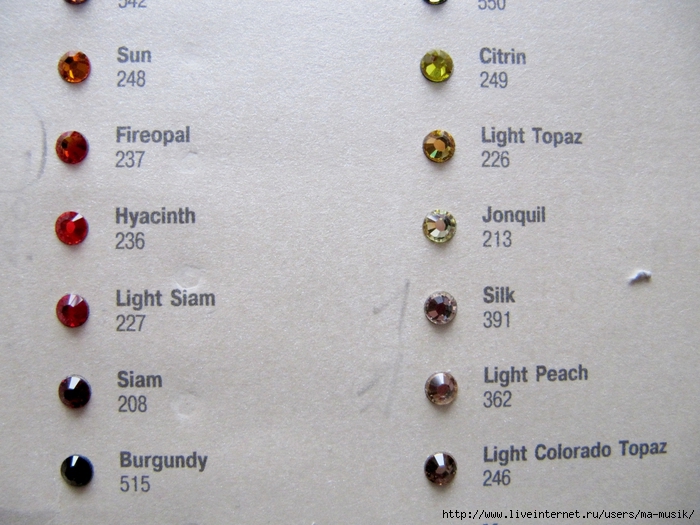
5.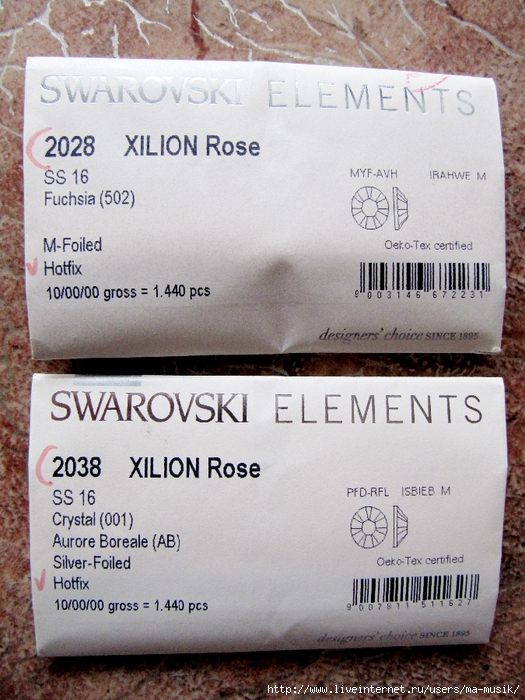
6.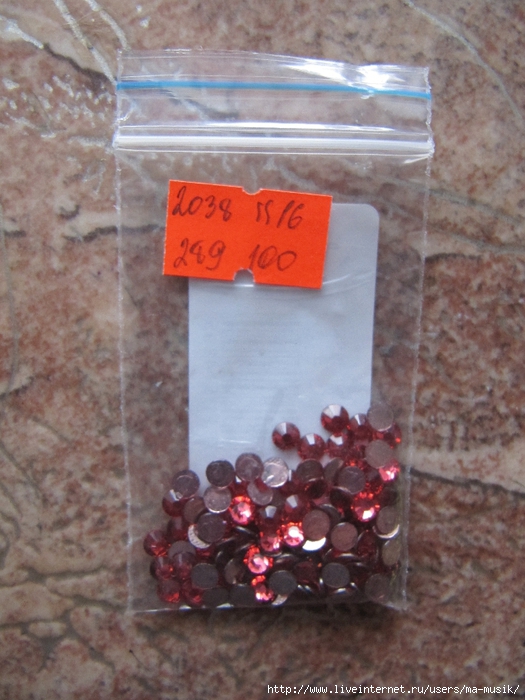
7.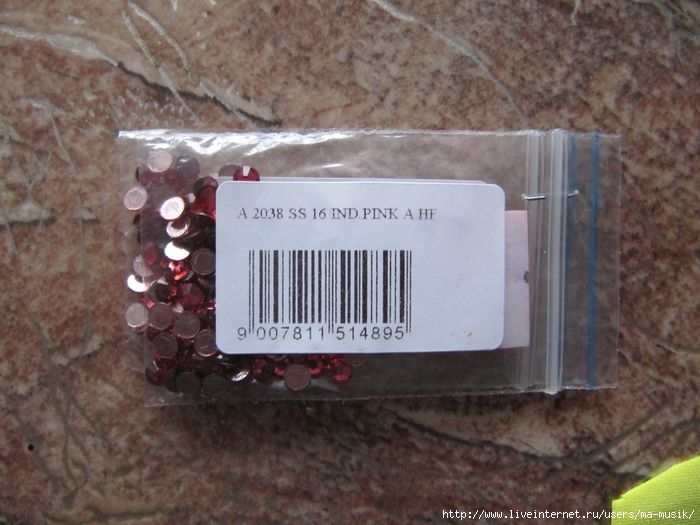
The applicator has several nozzles for different sizes of rhinestones; there are flat ones for the largest ones, which are best heated from the wrong side. The tips are not labeled, I select them by size myself. I just insert the rhinestone into the recess. it should be flush with the edge of the notch. Before gluing the rhinestones, I place the paper base from the self-adhesive film on the table, glossy side up, the part with the glued rhinestones comes off without a trace.
1.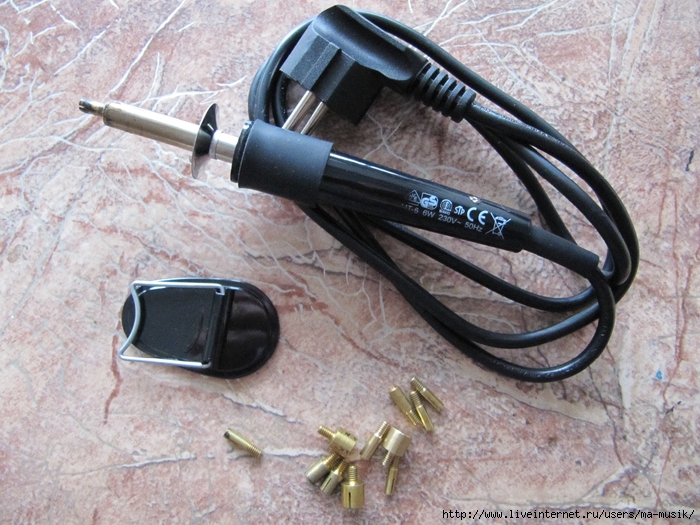
2.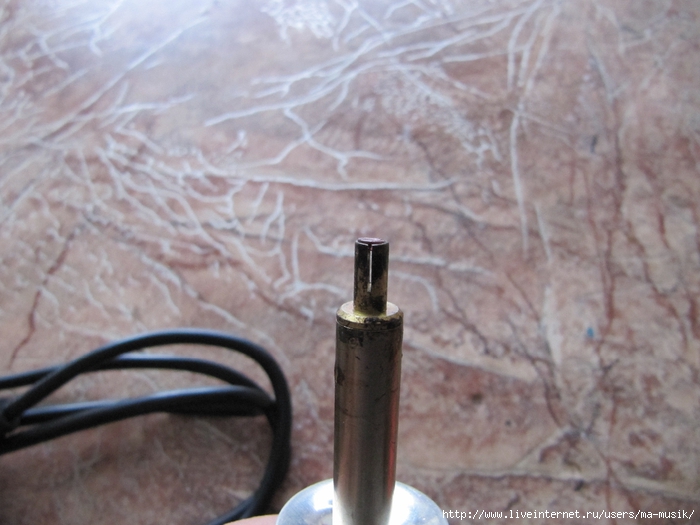
3.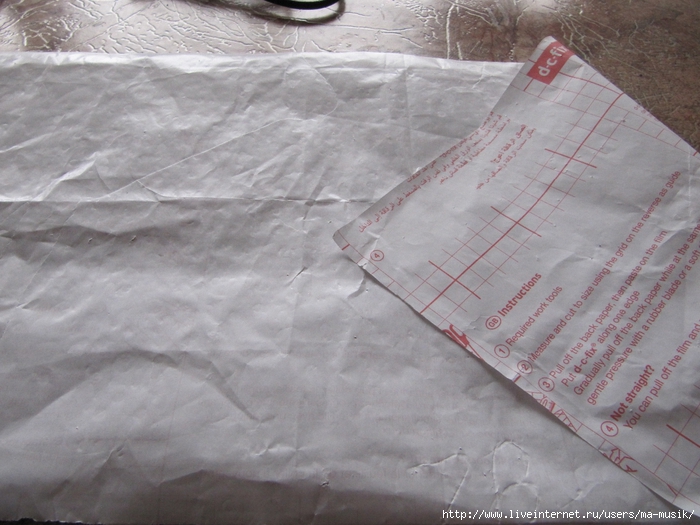
4.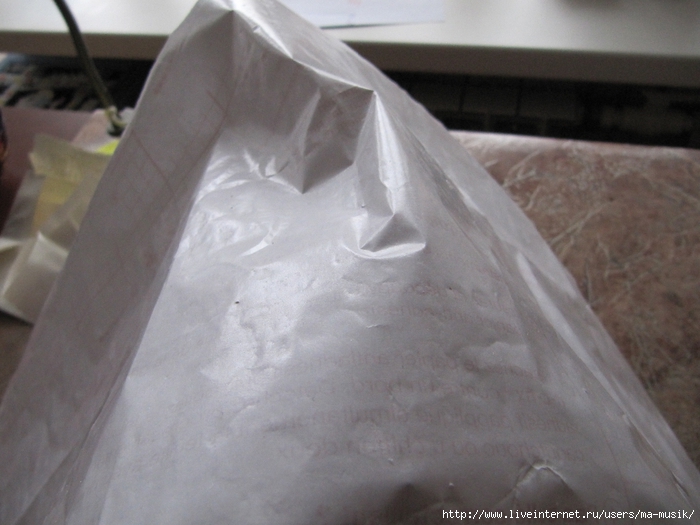
How are rhinestones glued? According to everyone. I like to glue the seams connecting the pieces, sometimes in one row, sometimes in two rows in a checkerboard pattern. It depends on how much the swimsuit is ordered for. You can glue rhinestones scattered if you have colors that match the fabric. Can be glued in groups. as accents to highlight certain elements.
7.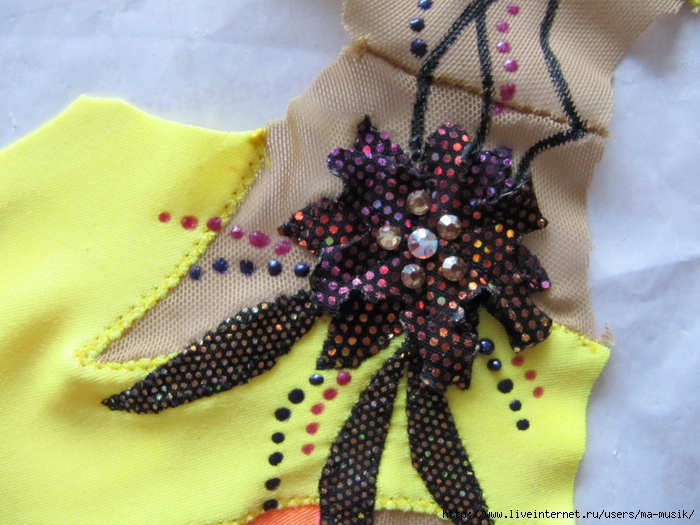
8.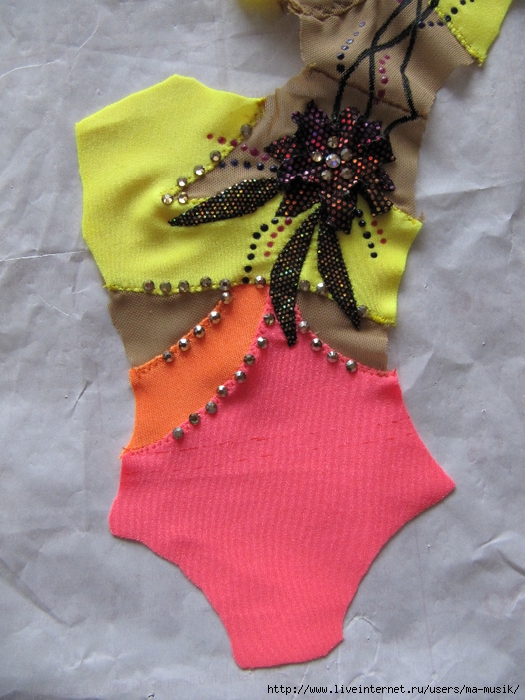
9.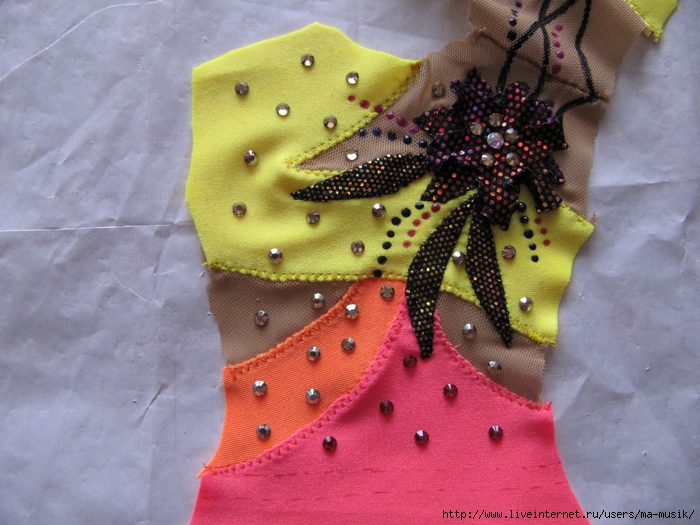
The bottom of the sleeves is a cut, I work it in two or even three rows in a checkerboard pattern. This treatment prevents the cut from twisting and stretching unnecessarily, but also does not limit the elasticity of the fabric.
9.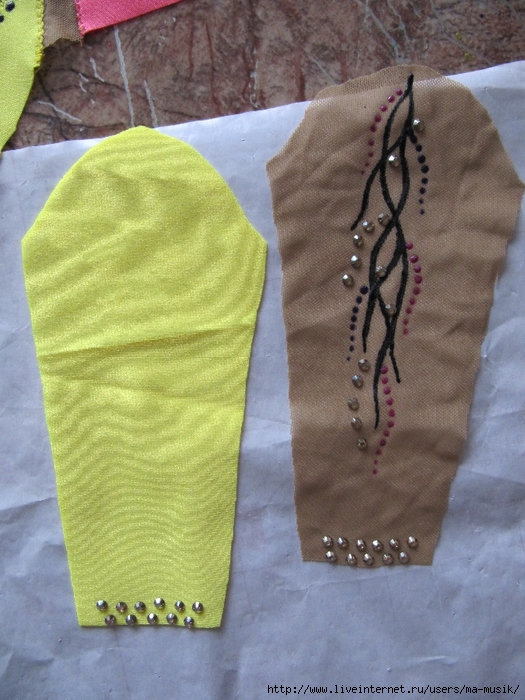
10.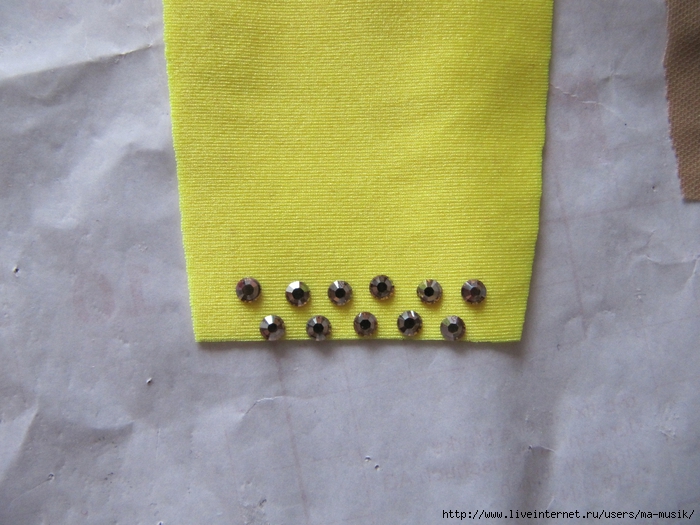
When I glue rhinestones in a row, I leave gaps as wide as the rhinestones themselves to maintain the elasticity of the costume. Stones glued end to end create inconvenience for the athlete; it feels like there are cords attached to the suit that do not stretch and interfere with the performance. I’m sewing a suit for a doll as a sample, so to save money I’ll glue the rhinestones on scattered. The sticking process itself: select the step (distance between the rhinestones), which also depends on the cost of the costume, the step is no less than 2.5 cm and no more than 5 cm. Lay out the rhinestones in a small area, if you like everything, start gluing. We place the applicator on the rhinestone vertically and count to five, lift the applicator and press the rhinestone to the fabric with something so as not to literally burn your fingers two or three times. I use a ruler. If you have a thimble, you can use it. Experience shows that pressing the rhinestone tightly while heating is not so important; it is more important to press it after, when it cools down, it sticks more firmly. Do not glue rhinestones close to the seam lines, it will be inconvenient to sew the parts together, you will break the needles, and the seam will not turn out smooth. I add rhinestones around the seams, if necessary, on the finished swimsuit.
17.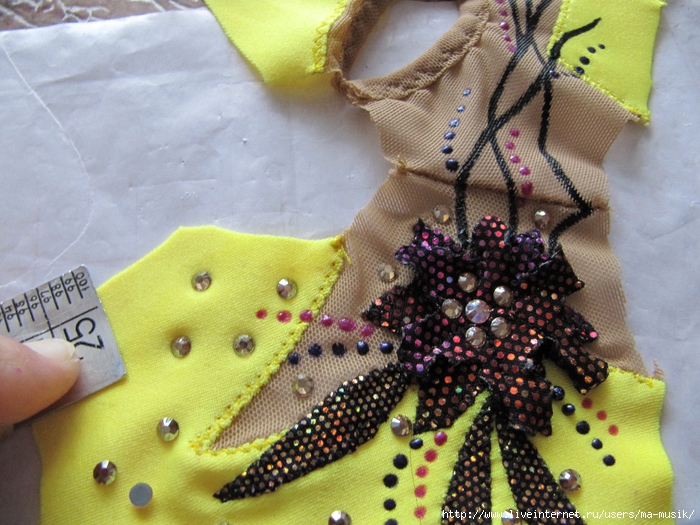
18.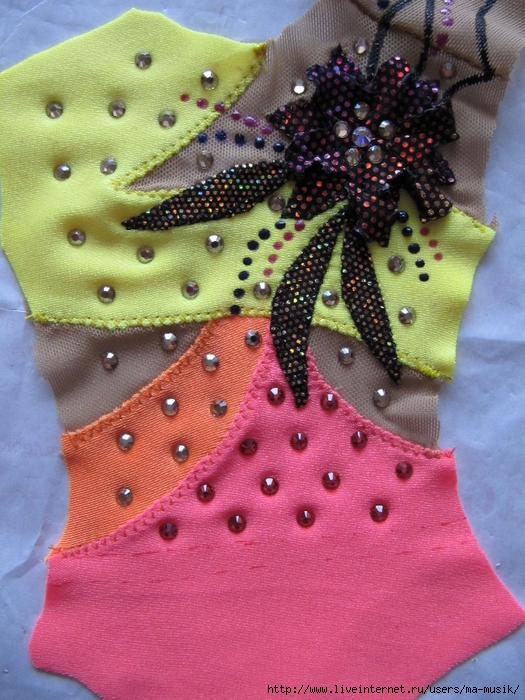
19.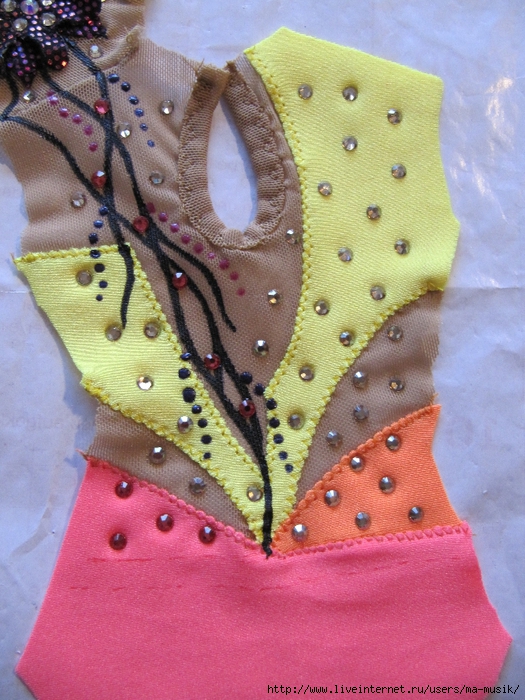
20.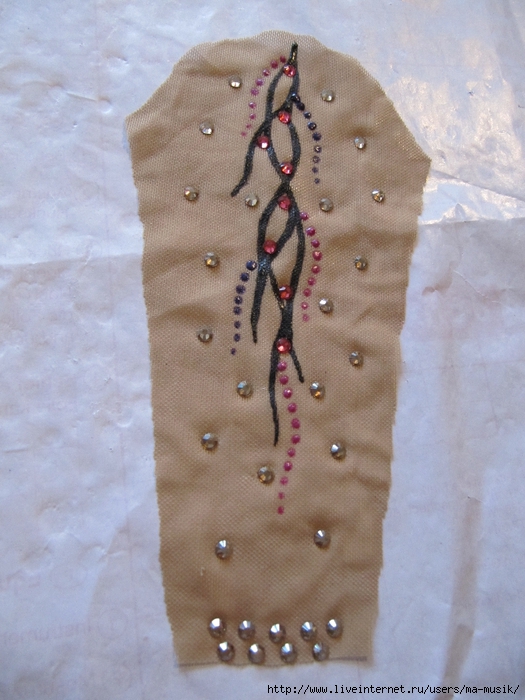
21.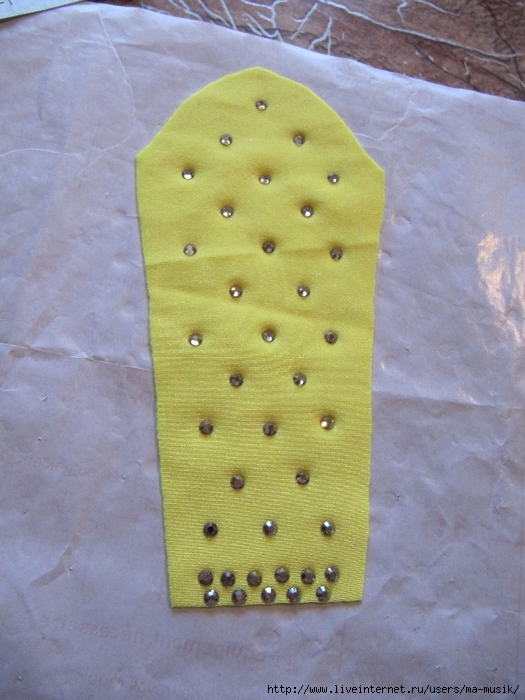
22.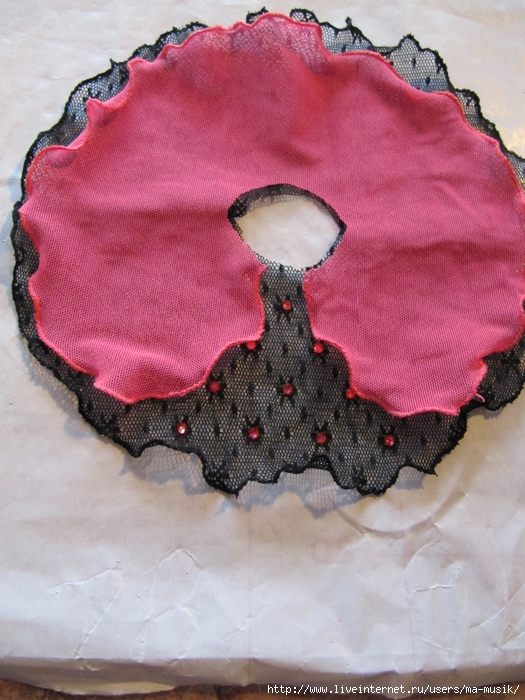
23.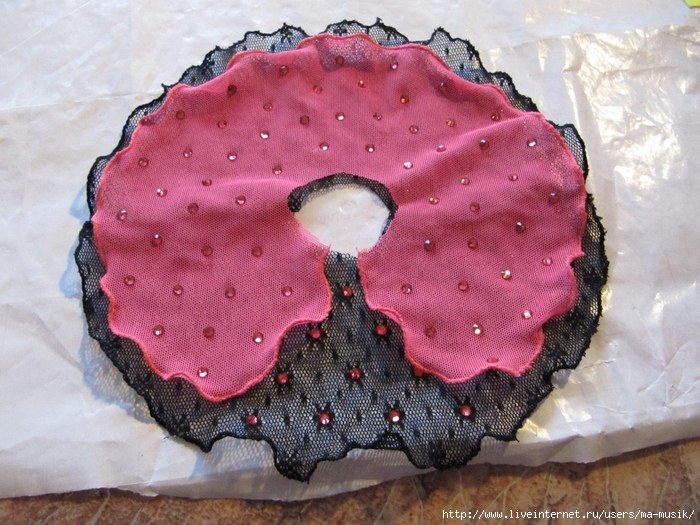
24.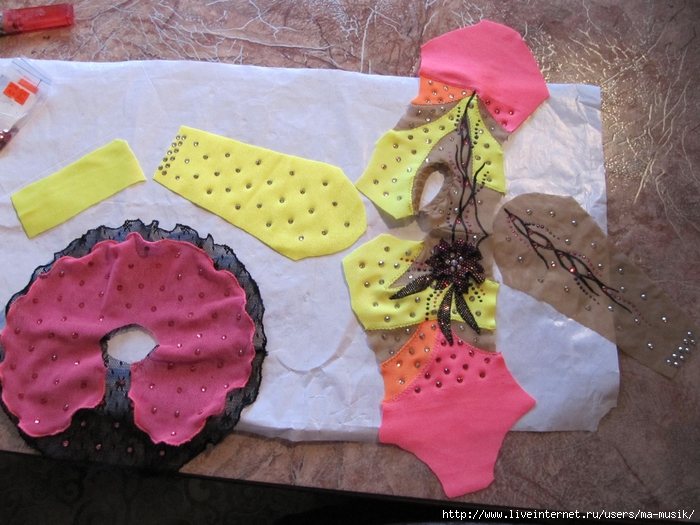
When I sew fabric pieces, I use stitch G on the orange circle. I cut off excess allowances close to the line. Sew the second shoulder, sew the sleeves into the open armhole, sew the side seams and sleeves in one line. If there is alternately fabric or mesh along the seam line, I raise the needle, rearrange the adjusters and continue the seam continuously. This is if you don’t need to change the threads. And if necessary, I change the threads. Then I tie the ends of threads of different colors. so that they do not come out on the front side.
23.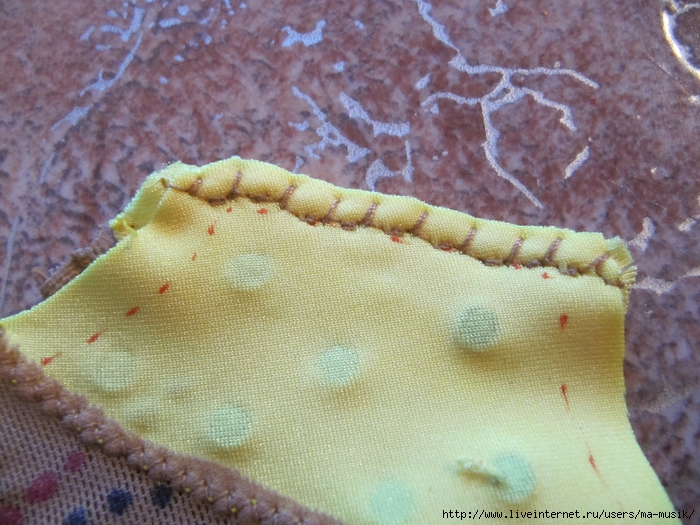
24.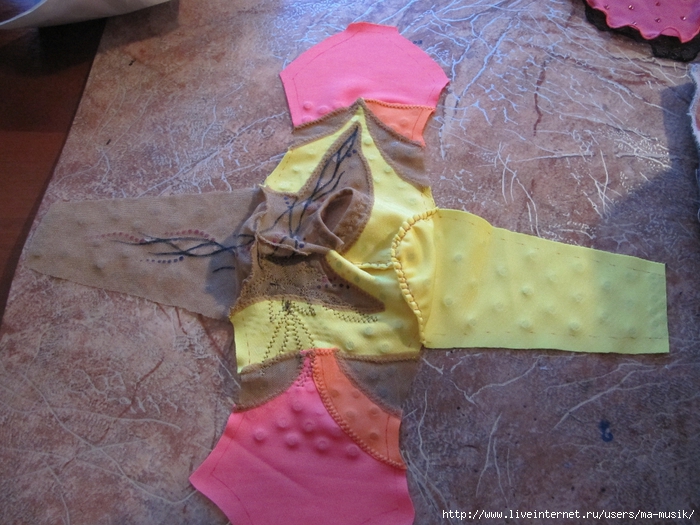
25.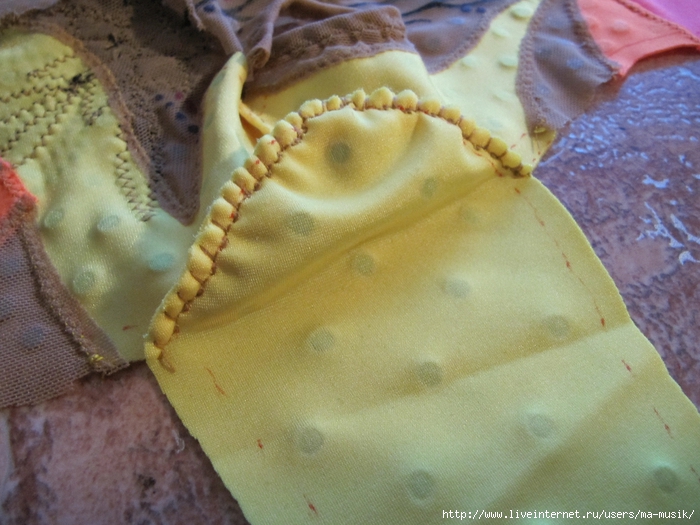
26.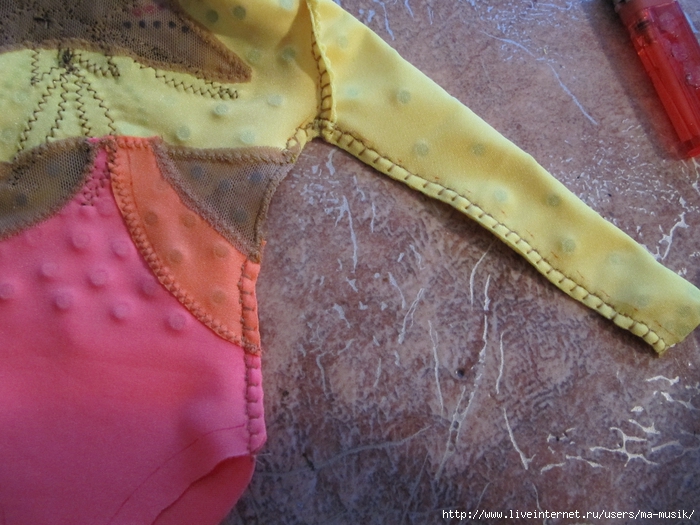
27.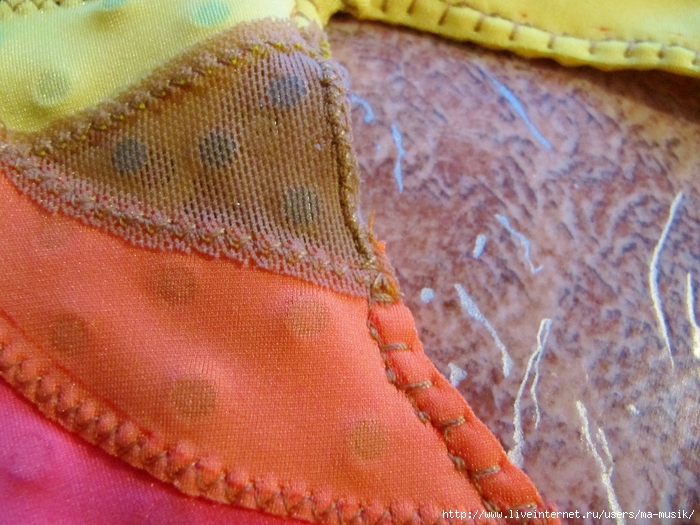
28.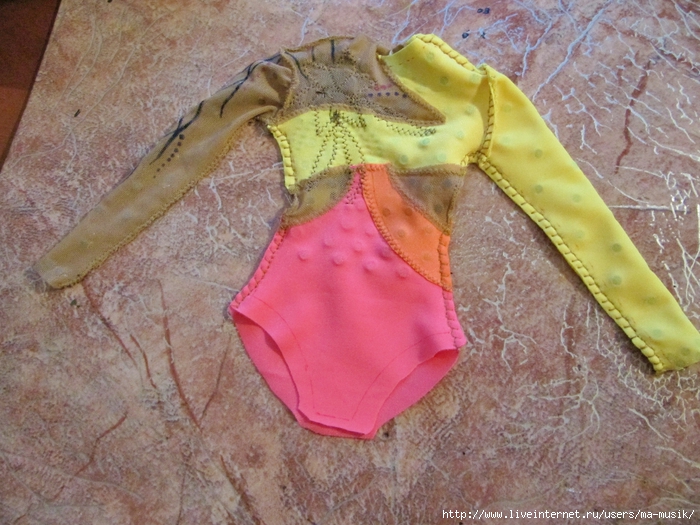
We process the neck. We sew the short edges of the stand and fold it slightly onto the long side by 5-7 mm. I sew it with a straight triple orange A seam. I cut the allowances to 1-2 mm. I turn it right side out. I combine the sections of the stand and neckline on the front side (if you don’t have experience, pin the stand along the neckline) and sew it on a machine.
26.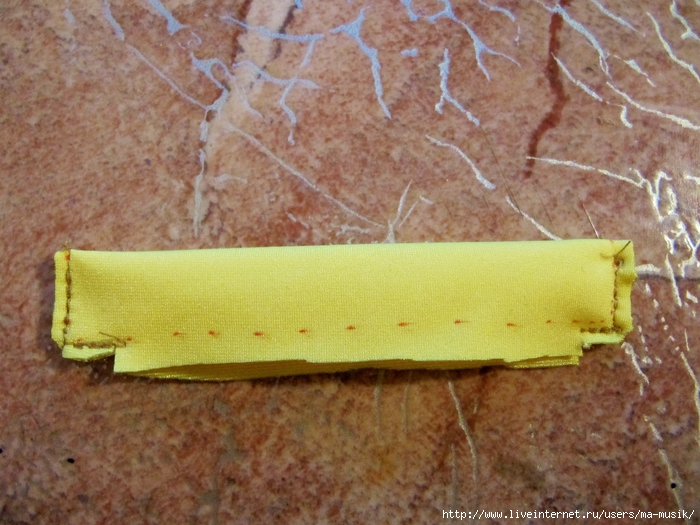
27.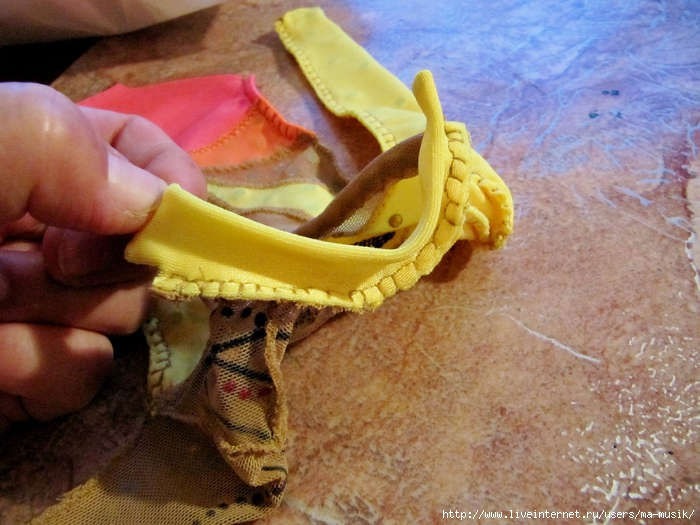
28.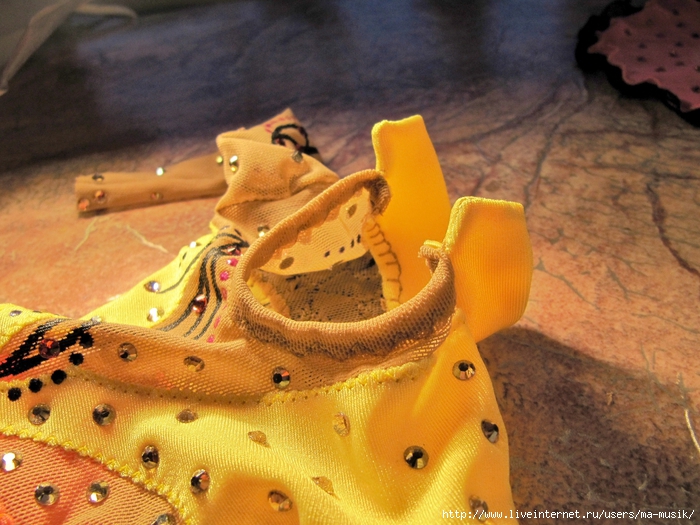
Be sure to check how the side lines look and how the parts fit together. If necessary, add rhinestones. Glue the rhinestone onto the stand.
30.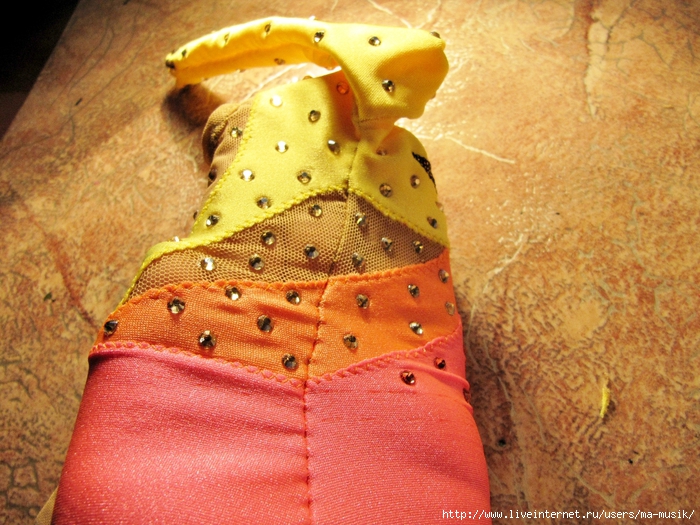
31.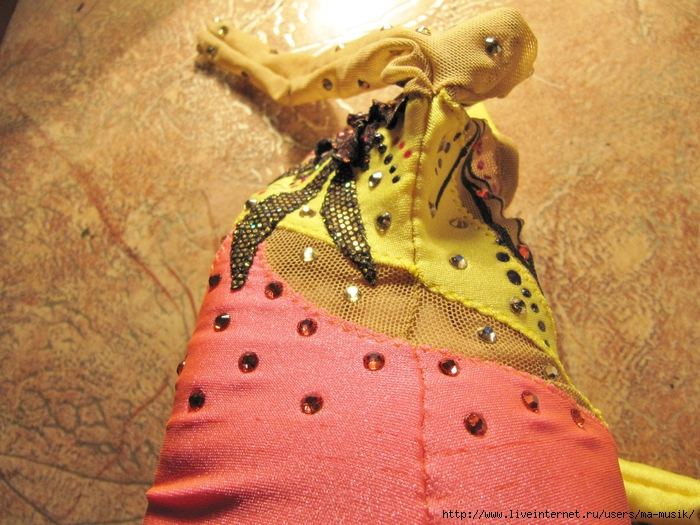
32.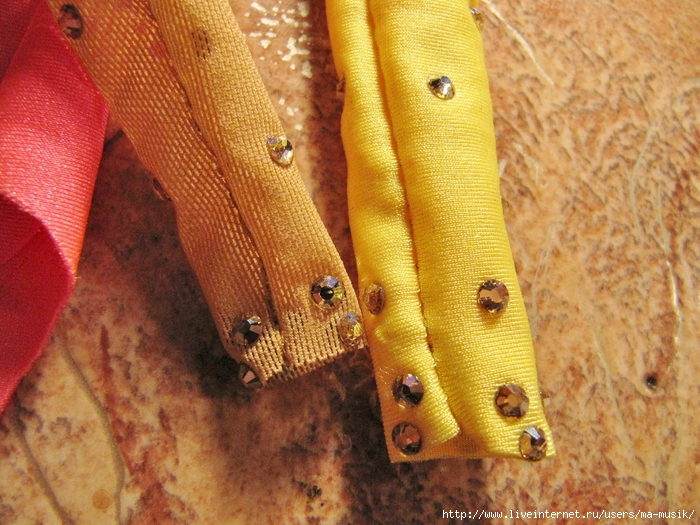
33.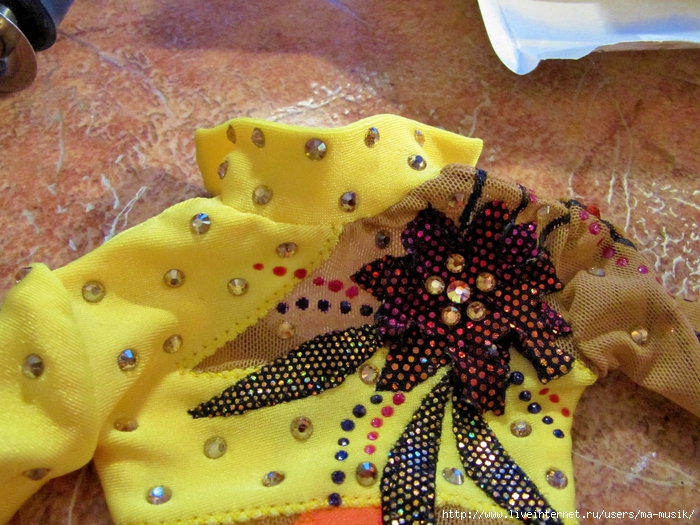
We combine the skirts with each other and pin them to the swimsuit with the cut down along the stitching line. Attaching the skirt. I often use a triple zigzag stitch under the letter D, it's easier to unravel if necessary (Or an orange G).
33.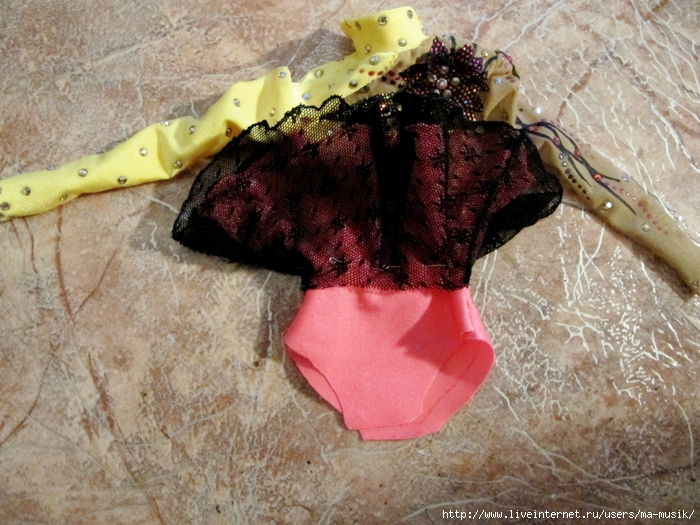
34.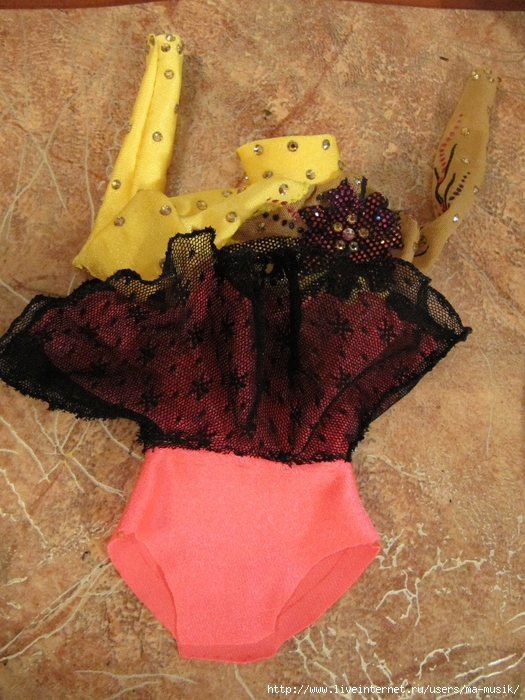
35.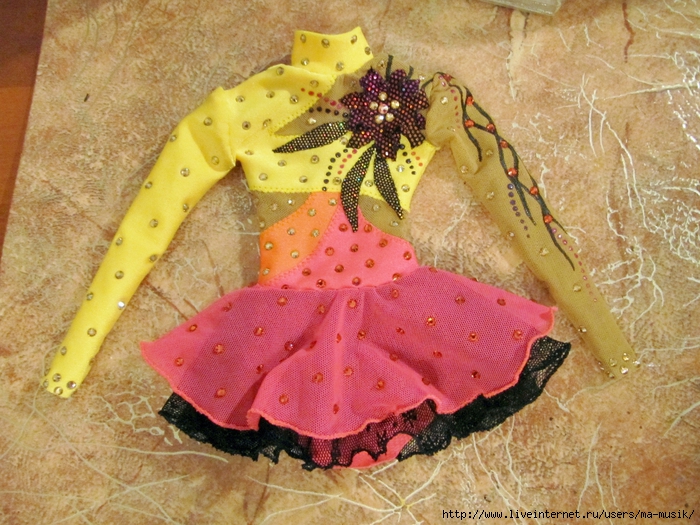
36.
38.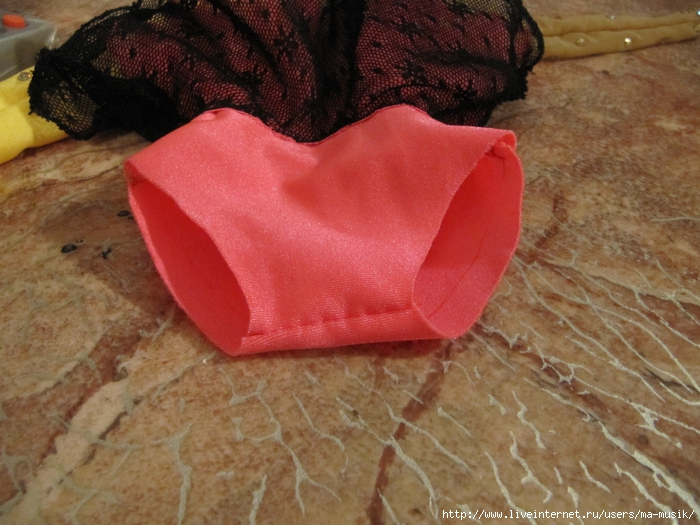
39.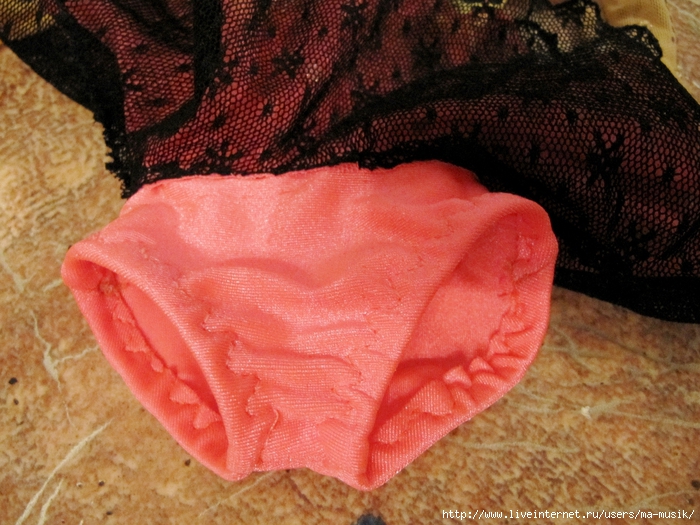
On swimsuits I use shirt snaps.
42.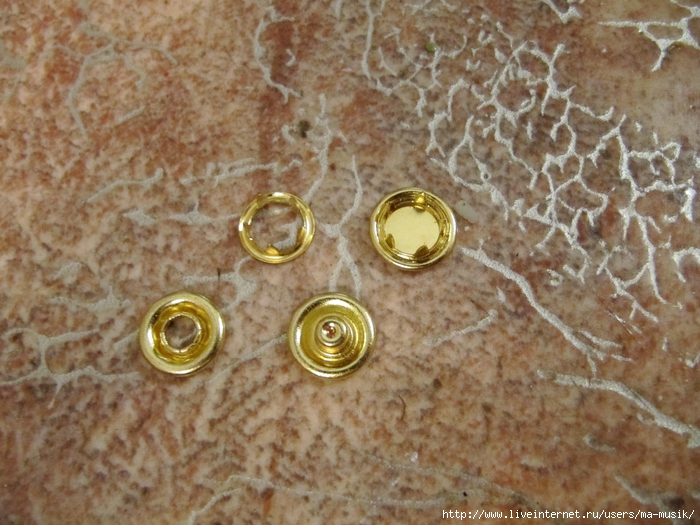
43.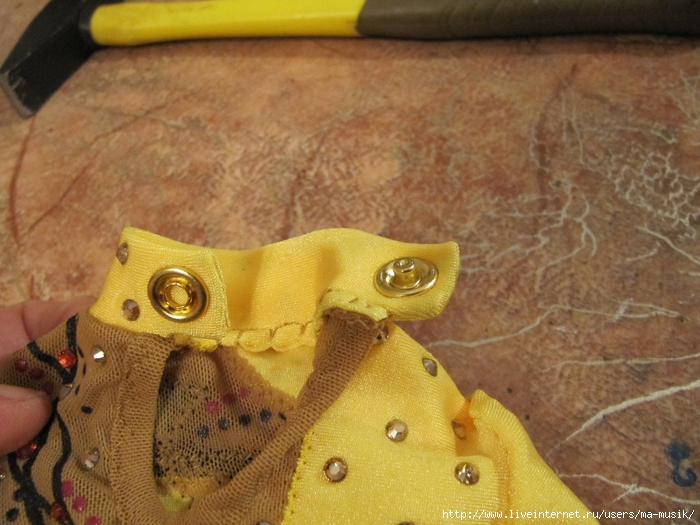
44.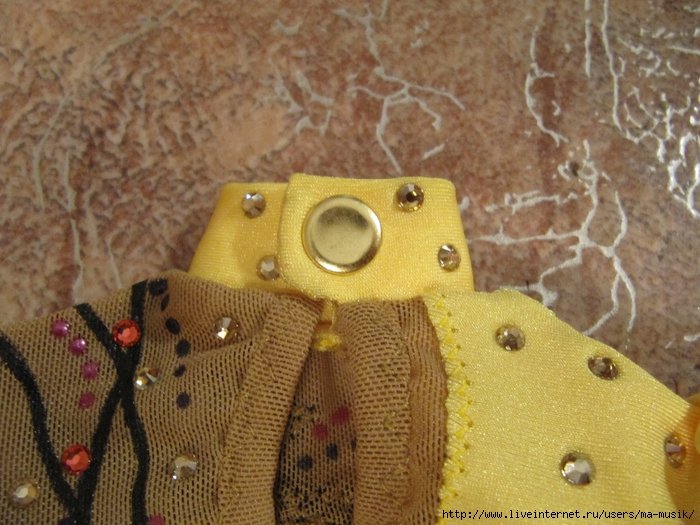
45.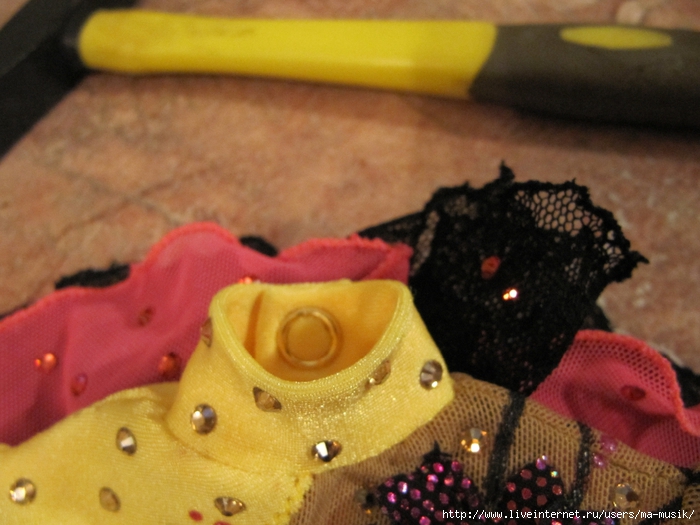
Fitting.
45.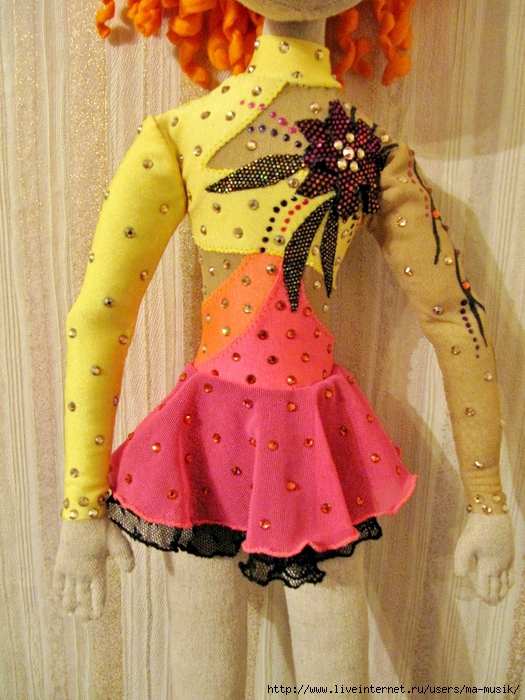
46.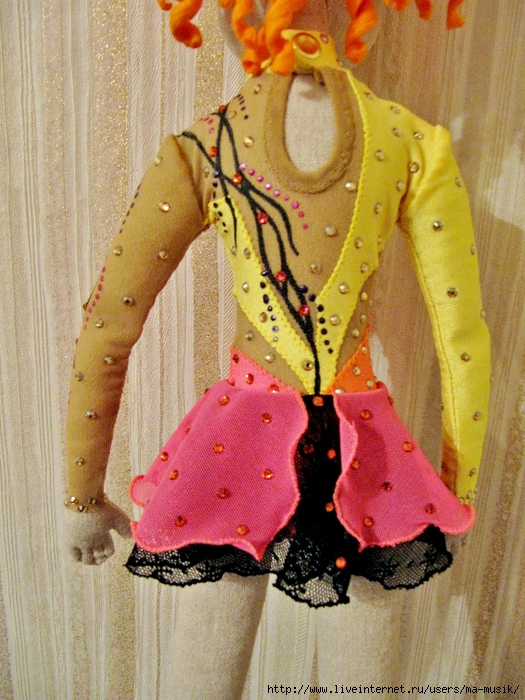
47.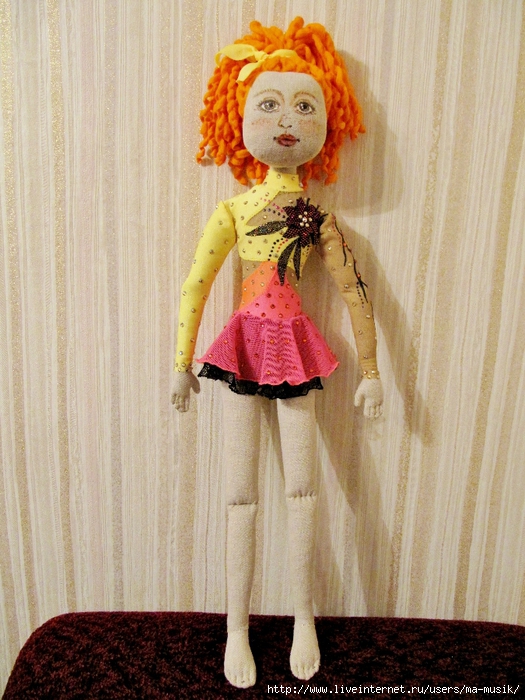
Well, it was precisely for this moment that I sewed Varenka. That's it, I'm good to go. And I wish you good luck! If you have any questions, write.
Sketch of a leotard for rhythmic gymnastics. The pattern is ready. Let's start creating a sketch. When creating, we take into account the requirements for performances in rhythmic gymnastics:
The swimsuit should not be transparent in the chest area;
-swimsuits with thin straps are prohibited;
- the swimsuit is cut so that the neckline does not extend beyond the groin fold.
Is this your first time sewing a swimsuit?
Choose the simple option. The photo shows a swimsuit made according to one sketch. In two versions:
- with long sleeves and fringe;
- without sleeves.
Swimwear is easy to sew. Minimum time and financial costs. Flower appliques are cut from stretch lace, available at fabric stores. The swimsuit does not require coloring, which makes life easier for a beginner.
Sketch of a leotard for rhythmic gymnastics. Schematic illustration.
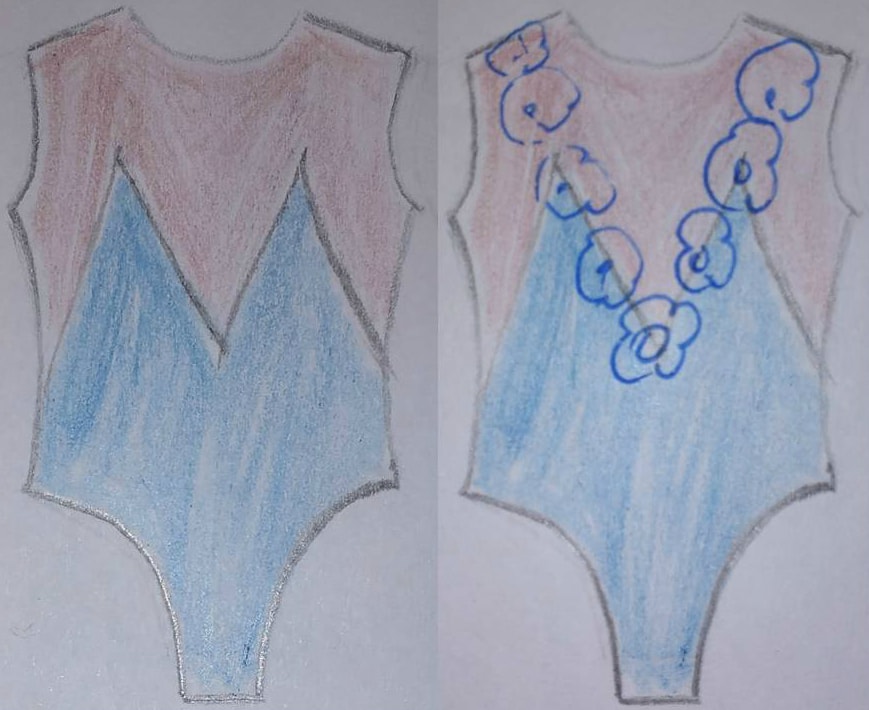
Lace flowers are placed on top of the V-shaped supplex swoosh and sewn on. Ready!
An example of lace.
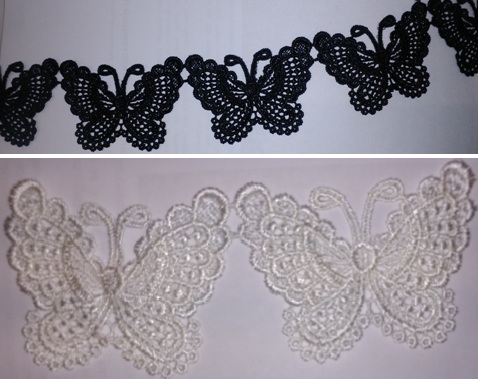
It is more convenient to choose lace where the flowers are in an unbroken pattern. Now there is multi-colored lace, the colors smoothly transition into each other. The flowers are bright and beautiful! You can paint the lace yourself with acrylic paints.
Cutting out a leotard for rhythmic gymnastics.
Master class on sewing a swimsuit according to a customer’s sketch! The pattern is ready. We draw the sketch on the pattern. Let's cut it out. Note! The swimsuit is unusual. The drop is not on the back, but on the shelf. The neckline will be shaped like a shirt collar!
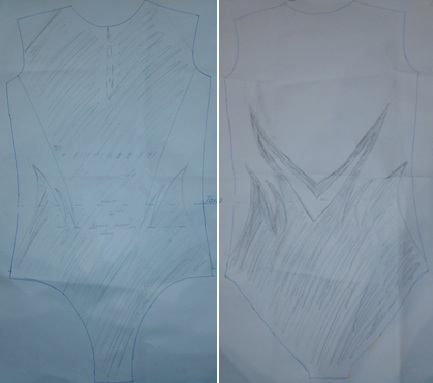
We cut out all the details WITHOUT seam allowances. Because the material is elastic. There should be a slight tension on the child!
Before cutting, we cut out all the elements made of mesh and supplex. The pattern is symmetrical, so we cut out half of the pattern on the left side. Then we display it on the right side. We get complete symmetry.
The process of creating a drawing.
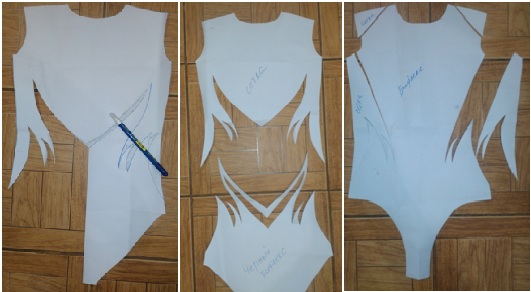
APPLICATION.
I’ll tell you a secret that allows you to cut out any applique without difficulty. Scotch! Regular adhesive tape! Lay out the pattern front side fabric, glue with tape. Now even a child can cut out the pattern!
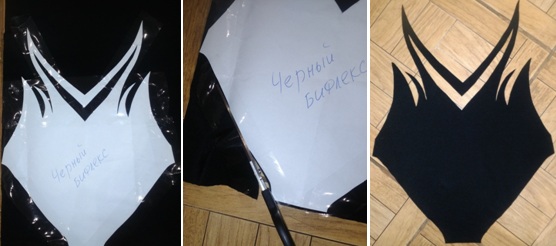
It turned out clear, smooth, professional!
Glue the pattern along the side seam. Useful for cutting top part from the mesh. We do the same with the shelf.
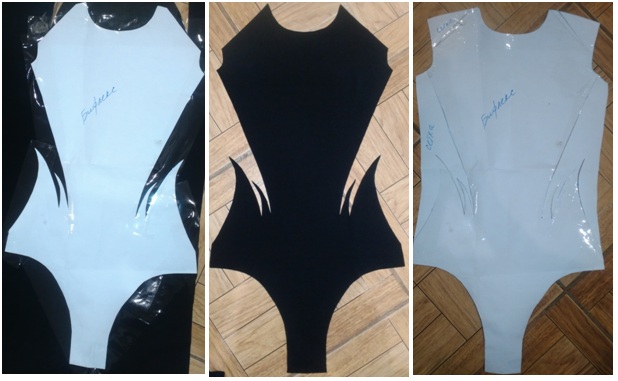
Let's start working with the mesh.
We lay out the mesh on the table, and on top we place the part of the swimsuit cut out of supplex.
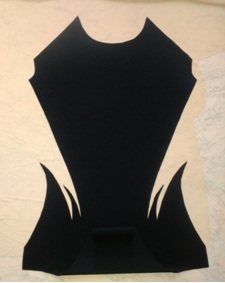
Use glue to sew the applique efficiently, evenly and beautifully. I use special fabric glue. I glue the supplex along the edge (see photo). The place where the parts are glued becomes strong while remaining elastic, which is important for a swimsuit. Sewing becomes easy. The machine does not chew on the thin mesh and does not skip stitches.
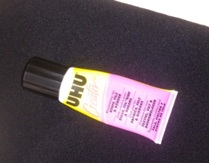
The supplex was glued to the mesh. Then we place a paper pattern on top of the material. Matching the pattern, we cut out the shelf and back.
From the front side
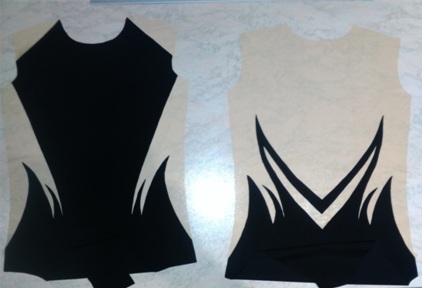
From the wrong side
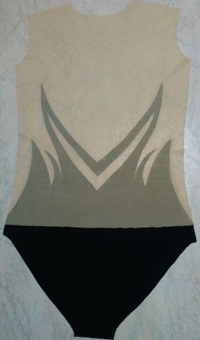
The cutting of the leotard for rhythmic gymnastics is completed. Let's get started!
Music, confident and precise movements, dizzying jumps and somersaults, bright ribbons and hoops, strict judges watching every gesture of the athlete. The impression of her performance largely depends on what a gymnast wears. You can buy a suit, but here’s the problem: there are mostly simple models on sale. But if you try, you can sew a unique outfit in which your future champion will become simply irresistible. How to sew a leotard for rhythmic gymnastics? Now we'll talk about it.
What should a swimsuit be like?
Despite the fact that most often you can find the simplest gymnastics outfits in stores, you still need to buy one. Of course, except for the one your daughter wears to training. It is needed to make a pattern - not everyone can create it on their own; this requires precision, accuracy and the skills of an experienced cutter.
Important! You can also sew a leotard for rhythmic gymnastics using patterns that are published in fashion magazines dedicated to sportswear.
But before you get started, think about what a sports suit for rhythmic gymnastics should be like:
- it should be made of durable elastic fabric so that it does not tear or change shape with sudden movements;
- the design needs to be correct, that is, the sleeves and small inserts in the upper part can be transparent, and the base can be made opaque;
- Do not make a too deep neckline - in front it reaches the middle of the chest bone, in the back - the middle of the shoulder blades;
- cutouts in the lower part should not open the inguinal folds;
- Narrow straps are unacceptable - the suit is made either with sleeves or with wide straps;
- the swimsuit should not mask or distort the lines of the body, it corresponds exactly to them, and if there is a skirt, it cannot be very full;
- if the suit is long, both parts that cover the legs are made of the same fabric (but the ornament may be different).
Looking for fabric
Before you sew a leotard for rhythmic gymnastics with your own hands, you need to select materials. As the main designers sportswear It is recommended to use supplex. This is an ideal fabric for swimsuits; it has a lot of wonderful properties:
- strength;
- stretches well, but quickly “returns” to its original shape;
- waterproof;
- easy to wash and dry quickly;
- painted in rich and bright colors;
- does not shed;
- goes well with other materials.
Based on the type of surface, biflex can be:
- shiny;
- matte.
Important! The shiny fabric shimmers, giving a sporty outfit a special brightness and expressiveness. The matte supplex perfectly emphasizes the lines of the figure, the athlete looks especially elegant and noble.
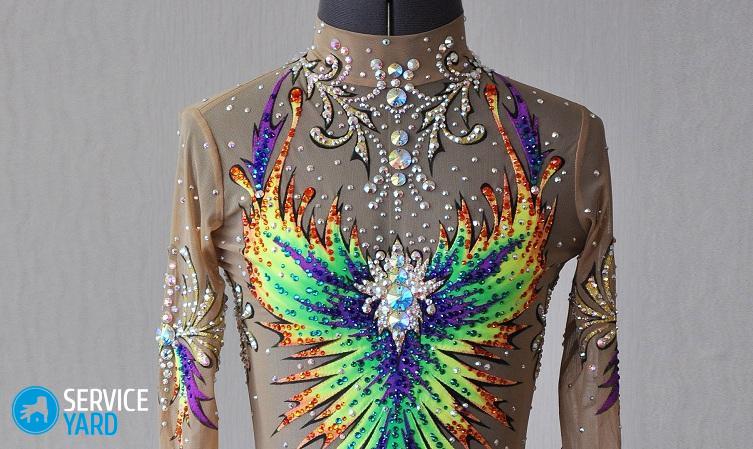
Fabrics for decoration
For individual elements, you can use other fabrics:
- guipure:
- velvet;
- georgette;
- stretch mesh.
What to choose?
- Guipure is an elastic lace fabric. It comes with a small or large pattern. As a rule, sleeve elements and inserts are made from it.
- For application, velvet is more suitable - a classic material with soft, thick pile. Sportswear designers love it because, thanks to the special arrangement of the pile, it creates an iridescent effect when moving.
- Individual elements can also be made from georgette - this material has a special weave of threads, which does not allow it to wrinkle. Georgette drapes beautifully, which attracts the attention of designers.
- Sleeves are most often made from stretch mesh. It is also used for inserts - for example, in the upper part of the back, or on the sides. You can make embroidery or applique on the mesh.
Important! Beige mesh is most often found on sale, but if desired, you can also find material in other colors. Advantages of this material:
- easy to cut and sew;
- stretches in all directions;
- combines with any materials;
- remains just as elastic after washing;
- if the mesh is of high quality, there will be no tightening on it, and the sections will not crumble.
Taking measurements
Even if you are going to sew a spectacular swimsuit using the details of a simple one, you will have to adjust the pattern, which means you need to take measurements. The athlete remains in only her panties, everything else must be removed.
In this case, the stomach should not be retracted. You need:
- neck girth;
- shoulder width;
- shoulder length;
- back width;
- front width;
- chest girth;
- waist circumference;
- hip girth;
- shelf length;
- back length;
- the length of the sleeve;
- forearm circumference;
- elbow circumference;
- wrist circumference;
- sleeve length from armpit to wrist;
- circumference of the panties from the front waist to the back waist;
- Circular circumference over the shoulder and groin.
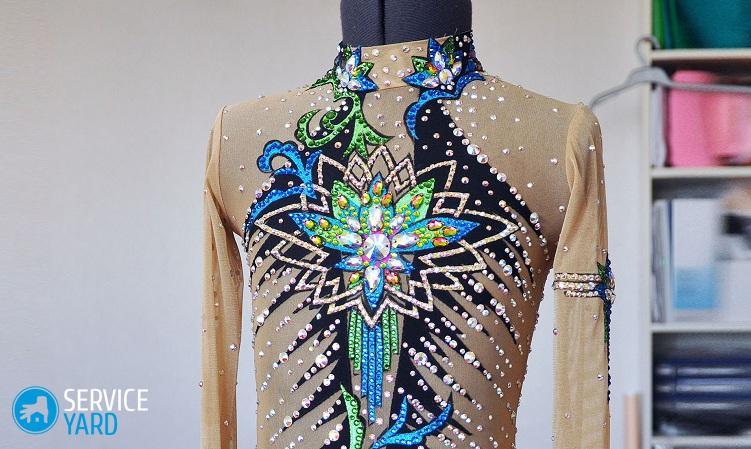
Measuring the top:
- Unlike taking measurements for a dress, the circumference of the neck should be measured in the middle of it, and not at the level of the base.
- Shoulder width is the distance from the extreme point of one shoulder to the extreme point of the other. We apply the zero mark of the centimeter tape to the lowest point of one shoulder, lay the tape along the shoulder, then along the neck to the highest point of the other shoulder, again along the shoulder and to the lowest point. Make sure that the measuring tape does not twist.
- Shoulder length is the distance between the highest and lowest points, that is, from the base of the neck to the edge of the shoulder.
- The width of the front and back is measured at the level of the armpits.
- We measure the length of the front from the neck to the waist, the length of the back - from the cervical vertebra to the waist. To measure sleeve length, the “model” must bend her arm. Place the tape measure at the bottom of your shoulder and move it down your arm to your wrist.
The vertical girth of the body is done as follows:
- Place the zero mark at the highest point of the shoulder.
- Lower the measuring tape strictly vertically downwards.
- Pass it through the groin.
- Bring up the other side to the highest point of the shoulder.
Measuring your hand
One measurement is taken from the bent arm - the length of the sleeve. To measure all other parts, the arm must be straight and relaxed. Measure the circumference of your wrist, elbow and forearm, as well as the length of your arm.
We measure the rest
The width of the panties must be measured very carefully. They should not reveal anything unnecessary, otherwise the athlete’s grade may be reduced. The height of the panties is measured along the thigh, with the zero mark set on the elastic band.
As for the length of the side seam, it is removed from the armpit to the waist. The zero mark is applied to the armpit, the hand is lowered, and the measuring tape goes straight down. The value needs to be looked at at waist level.
How to make a leotard pattern for rhythmic gymnastics?
Before sewing a gymnastic leotard, you need to prepare a pattern. If you have a ready-made one, you will have to adjust it according to the measurements taken. The same needs to be done if you take a simple gymnastic leotard as a basis.
It follows:
- carefully open (you can cut off the allowances);
- translate into graph paper;
- adjust according to measurements;
- cut out in two copies: one set of parts is intended for sewing, the other for modeling the design.
Important! The armhole should fit the arm tightly, and the sleeve cap should not be made too high.
Coming up with a sketch
How to sew a gymnastics leotard for performances? The master class begins with coming up with a sketch. Before you start drawing, keep a few considerations in mind:
- There should not be too much decoration, especially you should not overuse rhinestones, beads and other small details - it is better to make the base itself spectacular.
- The fewer seams, the better; the suit should not restrict movement, so models where the front and back are cut together with panties are preferable.
- Try to avoid unnecessary darts; the swimsuit should fit your figure well.
- It is better to make a solid base, and sew a skirt and decorative elements onto it.
- For a novice craftswoman, it is better to place a stretch mesh under all the parts - this will make flaws in the work invisible.
- Decorations need to be glued after the product is completely ready, and they should be placed very tightly.
- Don't forget to cut out a gusset - best for panties.
Time to sew
A do-it-yourself leotard for rhythmic gymnastics is sewn step by step like this:
- For cutting, the material can be folded in one or two layers, depending on how you made the pattern.
- If you have patterns from a magazine, then they represent halves of a shelf and a back. In this case, it is better to fold the fabric in half, aligning the edges, and pin the pattern so that the middle of the part coincides with the fold.
- If you made a pattern from an existing swimsuit, the material is spread in one layer, and the part is cut out completely.
Important! Remember that you need to cut along the lobar, and also leave 2 cm allowances on all seams.
- Start by pinning the front and back pieces together with tailor's pins.
- Try on what you got and adjust if necessary.
- Adjust the neckline.
- Sew the side seams.
- Sew the shoulder seams and the bottom seam.
- Baste and sew in the gusset.
- Baste the elastic at the waist.
- Try on the product, and if everything suits you, sew it on.
- Sew the sleeve, like any other product, along the edge with a basting stitch, and then pin it to the armhole with tailor's pins, not forgetting to make a fit (to do this, the ends of the basting stitch are slightly pulled up).
- Sew in the sleeve.
- Baste the skirt.
- Adjust the length - the back of the skirt should be longer than the front.
- Sew the skirt.
How to sew a skirt for a gymnastics leotard?
The skirt makes the athlete's figure more feminine. In gymnastic leotards, different styles of skirts are used:
- Sun;
- half sun;
- spiral;
- with flounces.
Important! They are cut in the same way as similar items for everyday or festive wardrobe. To make the gymnast's legs better visible, skirts are made with slits. This detail is sewn on top of the base, but another option is possible - a gymnastic dress is sewn, that is, a leotard with a skirt, and panties are sewn on afterwards.
Neck trim
The neckline can be trimmed with trim:
- Cut out 2 strips - they should together equal the circumference of the neck, and their width is 3 cm.
- Attach the strips to the neck cuts, front sides parts and undercut must touch.
- Baste the hem.
- Turn the binding to the wrong side, baste parallel to the neckline and stitch.
Important! You can also decorate the neckline with an elastic band - it will be even easier.
How to decorate a leotard for rhythmic gymnastics with your own hands?
You can decorate a leotard for rhythmic gymnastics with your own hands in different ways:
- rhinestones;
- embroidery;
- appliqué;
- sequins;
- beads;
- painted.
Important! It is better to paint on fabric before all the parts are assembled together - this will allow you to make a beautiful design with or without a stencil, but without staining other parts. As for other types of jewelry, the final finishing is done on the finished product. At the same time, you need to make sure that sequins, beads, beads and other decorative elements are sewn or glued very securely so that they do not fall off during the performance - a bead on the carpet can result not only in low marks, but also in serious injury.
Creating a spectacular costume for performances with your own hands is much more interesting, accessible and enjoyable, because no other athlete will definitely have such an outfit, which means there will be much more self-confidence. And this is the key to proper performance and victory!
If you want to learn to sew swimsuits worthy gymnasts level of international competitions- then you should come to us.
If you don't know how to sew at all, we'll teach you. At the end of the course, all students leave with a fully hand-sewn scale model of a swimsuit, and quite a complex one at that.
What will we teach?
We will teach you all the technologies that we use in our workshop when making leotards for rhythmic gymnastics, we will reveal to you all our little secrets and know-how. The bulk of the technologies we use were developed by me personally when I started sewing leotards for rhythmic gymnastics and were honed over many years of practice in the workshop.
We'll teach you how quality sewing swimwear and enjoy this creative process.
More about themes which we will go through during the training process:
- Creating a pattern for the base of a swimsuit, trimming the fabric, cutting the product, preparing parts for assembly.
- Basic principles of creating a sketch. The influence of the compositional design of a leotard on the perception of a gymnast’s figure. How to draw an applique beautifully - form and counter form, line, rhythm, color. How to correctly transfer applique details from a sketch to a swimsuit pattern so that the finished product looks like the sketch.
- Various methods of processing fasteners, collars, armholes, bottoms of sleeves, panty edgings: drop, zipper, stand-up, choreographic neckline, boat, type of processing collar without stand.
- Working with applique: transparent method, sandwich method. Let's consider other methods of working with the application.
- Straight and curved draperies, 3-D techniques (creating feathers, three-dimensional flowers of various types, creating abstract three-dimensional elements).
- Assembling a swimsuit: preparing the swimsuit for fitting, adjusting the fit of the swimsuit, fitting the skirt.
- Cleaning up the swimsuit. Technique for sewing on a skirt, final joining of the appliqué. Let's consider different kinds skirts, features of their assembly and fit. Techniques for sewing a fringed skirt.
- Techniques for painting a swimsuit: watercolor painting method, dry method, contour appliqué, working with glitter.
- Decorating a swimsuit with Swarovski stones. Regular style of laying stones and laying them in place. Cold and hot fixation.
What can't we teach?
In the process of creating swimsuits, the artistic component is very important.
I will explain how not to make a mistake when creating a sketch, but in order to create beautiful sketches, you need to train your eyes, you need to gain visual tools, look at a huge mass good work various masters.
I will show you how to draw an applique, tell you about the basic principles of arranging elements on swimsuits, but I won’t be able to guide your hand to make it look beautiful. Your hand and pencil can teach you how to draw beautiful applique contours.
I will show you how to beautifully tint details, how to tint a swimsuit so that it sparkles, how to work correctly with a brush to create smooth and clean color transitions, but I will not be able to decide for you what tone to set the swimsuit, and I also will not be able to guide your hand to It turned out to be a high-quality tinting. Your hand, brush and regular practice can teach you.
I will show you how to arrange stones, tell you how to place accents correctly, how to use concentrations and pauses to emphasize the composition, but I cannot decide for you how you will do this.
To create really beautiful swimsuits, you need to cultivate your taste, perception of beauty, analyze what you like and what you don’t, and why. You have to train your hand, striving for perfect lines. Learn to work with paints, learn to mentally see in the application final result, and implement it. Unfortunately, 8 days of training is extremely insufficient to teach this; it takes time. Similar skills can be learned in art and design schools and take months and years to complete.
What forms of training do we practice?
For the convenience of Muscovites and residents of other regions of the country and the world, we have provided various shapes training.
Weekend groups.
The course is convenient for those living in Moscow and surrounding regions.
The cost of the course is 60 thousand rubles.
We train on Saturdays and Sundays from 10 am to 4 pm for 4 weeks in a row. This results in 8 lessons of 5 hours each, for a total of 40 teaching hours.
Students listen to theoretical material and perform practical tasks, part practical work carried out in the form homework. The training process includes working on a scale model of a swimsuit. Students can work on their real swimsuit in parallel and consult on any questions that arise.
During the lesson there is a time break, students are offered tea, coffee, juices, sandwiches, and sweets for tea.
This form of training is very convenient because it allows you to consolidate the acquired material well in large intervals between classes.
8-day intensive.
The course is designed for the convenience of nonresidents.
The cost of the course is 76 thousand rubles, the cost of accommodation with meals is 2500 rubles per day.
The course lasts 8 days in a row.
Classes start at 10 am and end at 8 pm. In total, this amounts to more than 75 hours of work in the workshop.
On the last day of training, if the course is completed in full, it usually ends around 16-00 and students can visit the main stores selling fabrics and accessories for creating swimsuits.
More hours are provided for this form of training, because students do not have the opportunity to do homework, all practical exercises students must complete during the course. During this course, I also recommend making a scale model of a swimsuit. Students with good sewing experience can work on an actual swimsuit. But I strongly recommend that you still work on a scale model. We designed it so that it accommodates a maximum of various technologies used in the creation of swimsuits. Those technologies that could not be tested on a scale model are tested on samples. When a student chooses to work on a real swimsuit, a lot of time in the workshop is spent on creating an applique design (please note that my duties include teaching you how to draw an applique, and not drawing it for you) and on performing the same type of operations (for example, when sewing an applique ), and the student does not have time to practice other technologies. And it is not always possible to finish a swimsuit to the final result. That is why I recommend everyone to think carefully again and stop at completing the standard task. The intensive learning process is very intensive and labor-intensive; be prepared to work a lot.
During the day, students will be offered lunch and tea.
Individual training course.
This form of training is designed for non-residents and residents of the Moscow region who prefer an individual approach. For non-resident students on an individual course, accommodation with meals is provided.
The cost of training is 96 thousand rubles, the cost of accommodation with meals is 2500 rubles per day.
Usually, students in an individual course sew real swimsuits. Individual approach training makes it possible to devote more time to the student, so work on a real swimsuit goes faster.
It is possible to undergo individual training in a mini-group of two people. Mini-group allows you to provide the same level individual work with the student, as when teaching one person.
It is possible to provide individual training for foreign students who speak English.
Individual consultations.
Sometimes professionals come to our workshop to study clothing production to get information about the specifics of work when creating swimsuits. Professionals do not need to complete a full training course. They are interested in considering only some topics and nuances of the work. For them, we have provided a form of individual consultations. The cost of individual consultations is calculated at 2,500 rubles per hour.
Online training.
You can also take training in our online school. The full course fully corresponds to the courses that students take in the workshop, and in the process of completing course assignments you will also sew a scale model of a leotard for rhythmic gymnastics.
How does the online course work?
After paying the course fee, you are given three months access to the course materials.
You can watch video lessons at any time convenient for you and review the lessons an unlimited number of times within three months of admission. You can pause the video and re-watch the desired part of the lesson.
During the training process, you are asked to sew a scale (1:2) model of a leotard for rhythmic gymnastics and a sample appliqué with three-dimensional elements of A4 size.
All lessons are arranged in a clear sequence.
In one lesson you watch several videos, where, as an example, real work technology on the topic of the lesson is shown.
You then watch a video lesson with detailed instructions for the task you must complete. You complete the task, photograph the result and post it for verification.
I check your work, comment on whether you did everything correctly, and write what errors need to be corrected. And depending on the result, I accept or do not accept the work completed.
If the work is accepted, you are given access to the next lesson.
If the work is not accepted, you correct the indicated error, post the result, and I accept the task.
This strict structure of the online course was chosen because during the training we are sewing a swimsuit, and if you did not complete the previous task, you do not have the necessary parts to complete the next task.
The cost of a full online course is 40 thousand rubles. You get access to courses for 3 months. Practice has shown that this time is more than enough to complete the full course and there is still time left to sew a full-fledged swimsuit while receiving online consultations.
Anyone who has successfully completed all tasks is sent (by Russian Post) a certificate of completion of the course.
Website online schools Svetlana Gerasimova is located here:
For those arriving by metro, transport is provided from the Konkovo metro station to the workshop.













